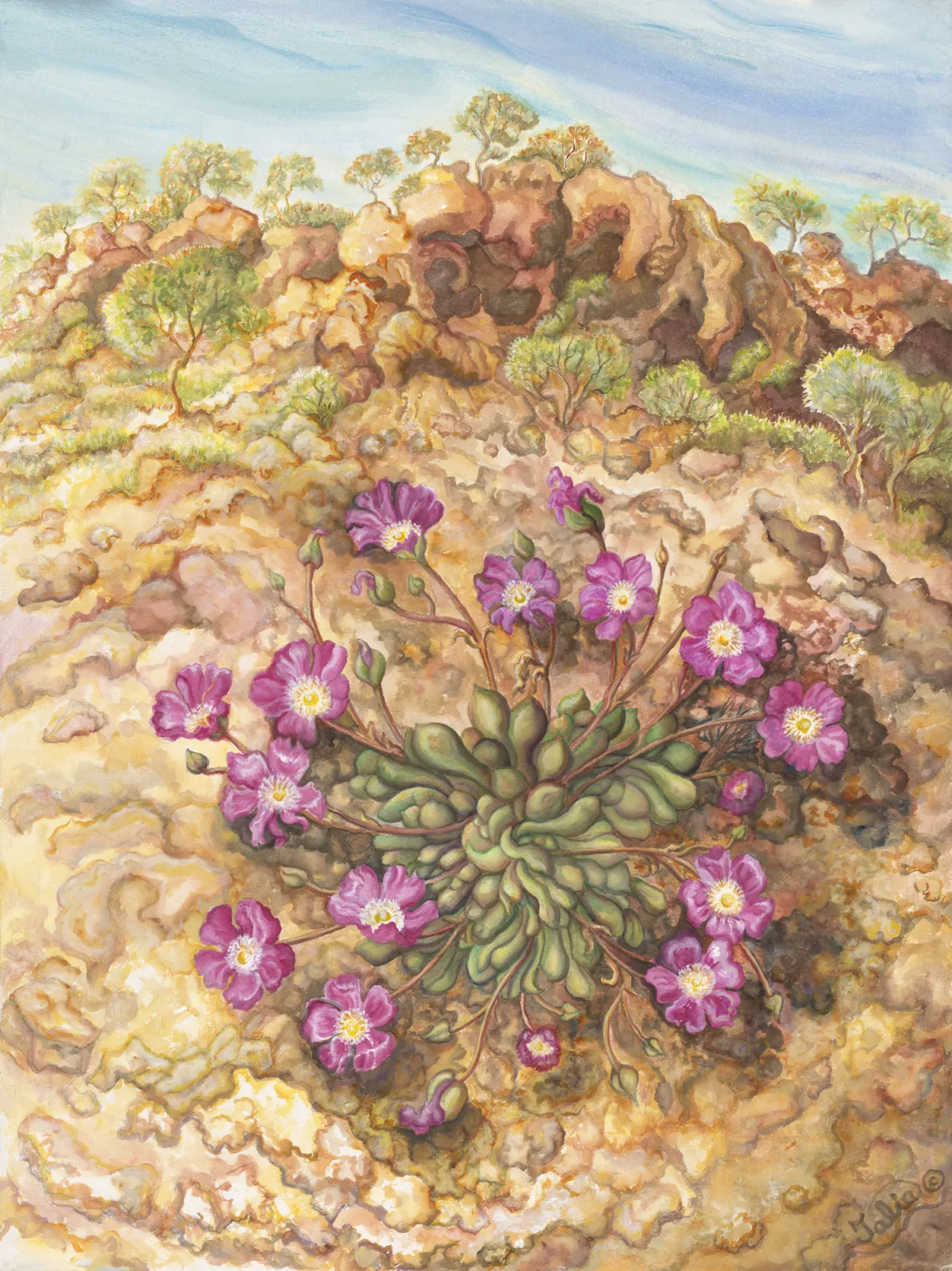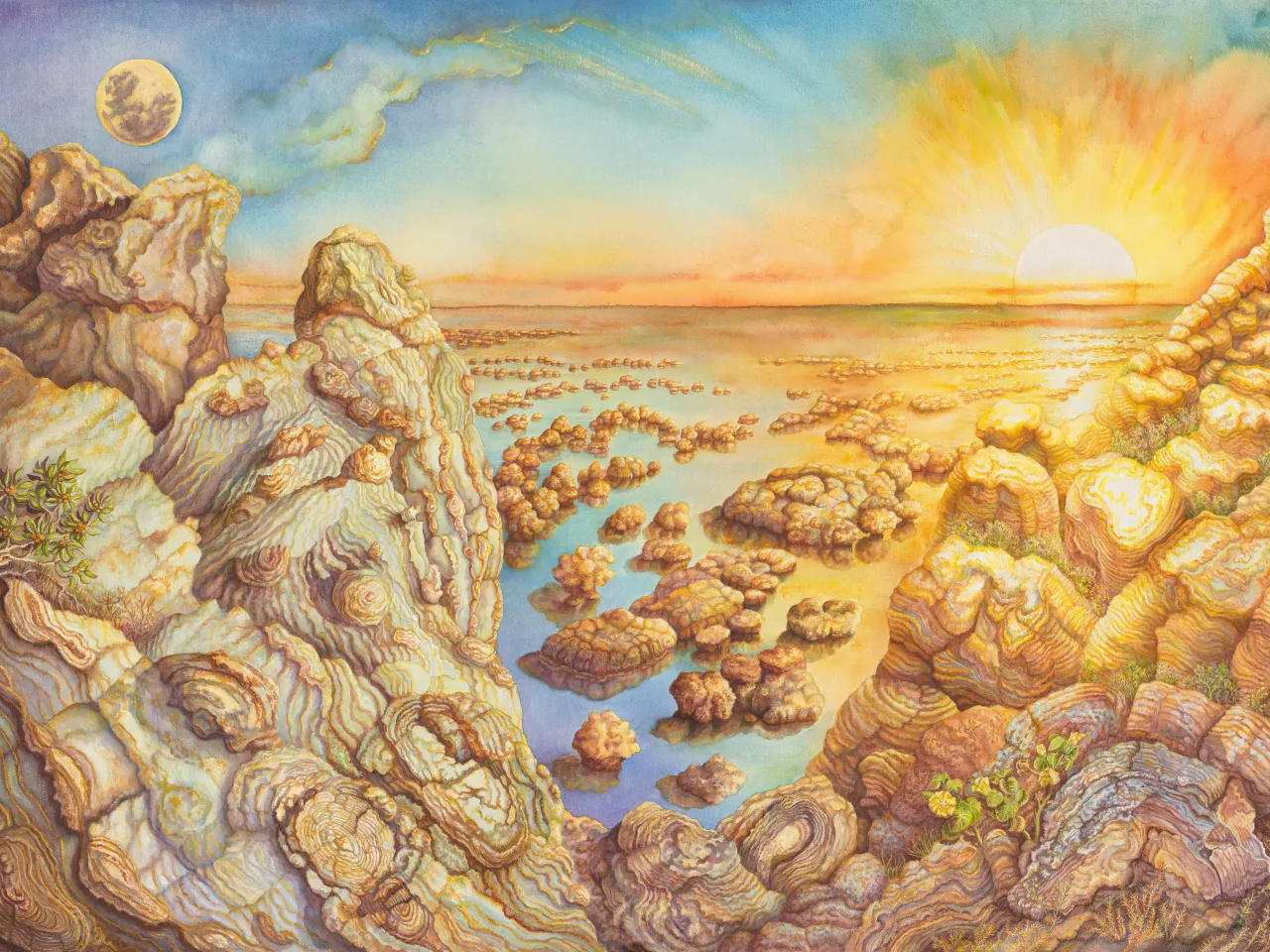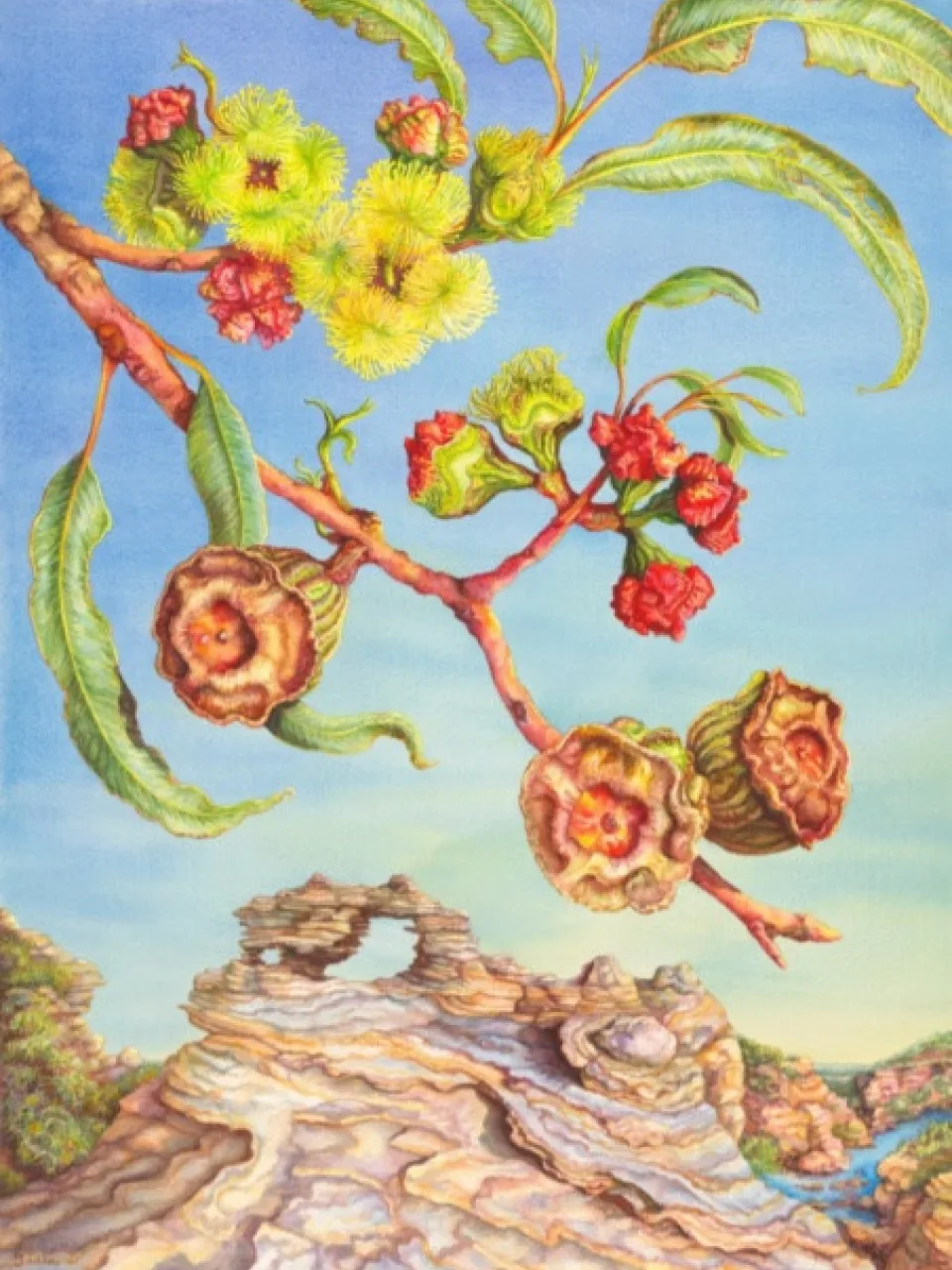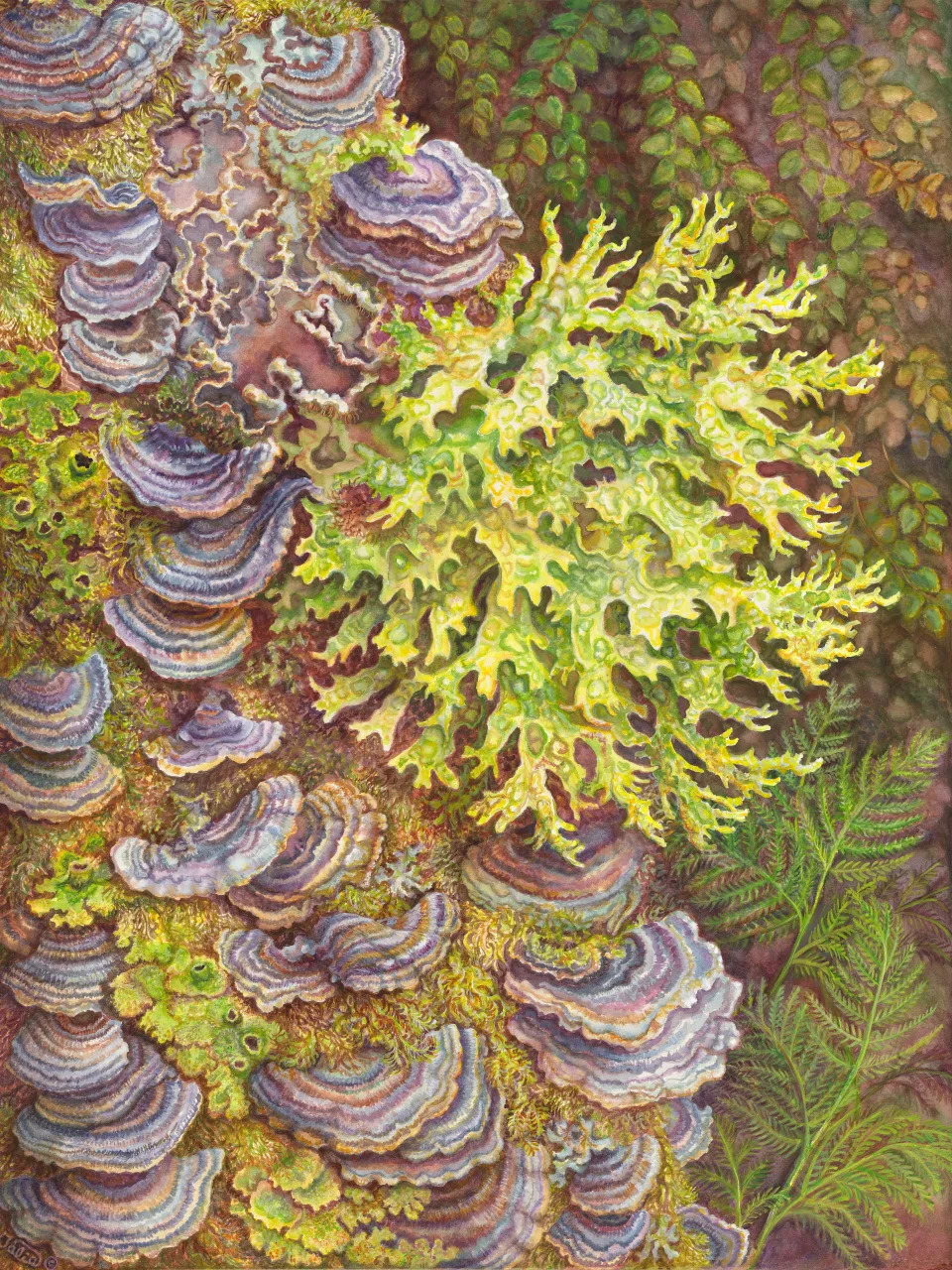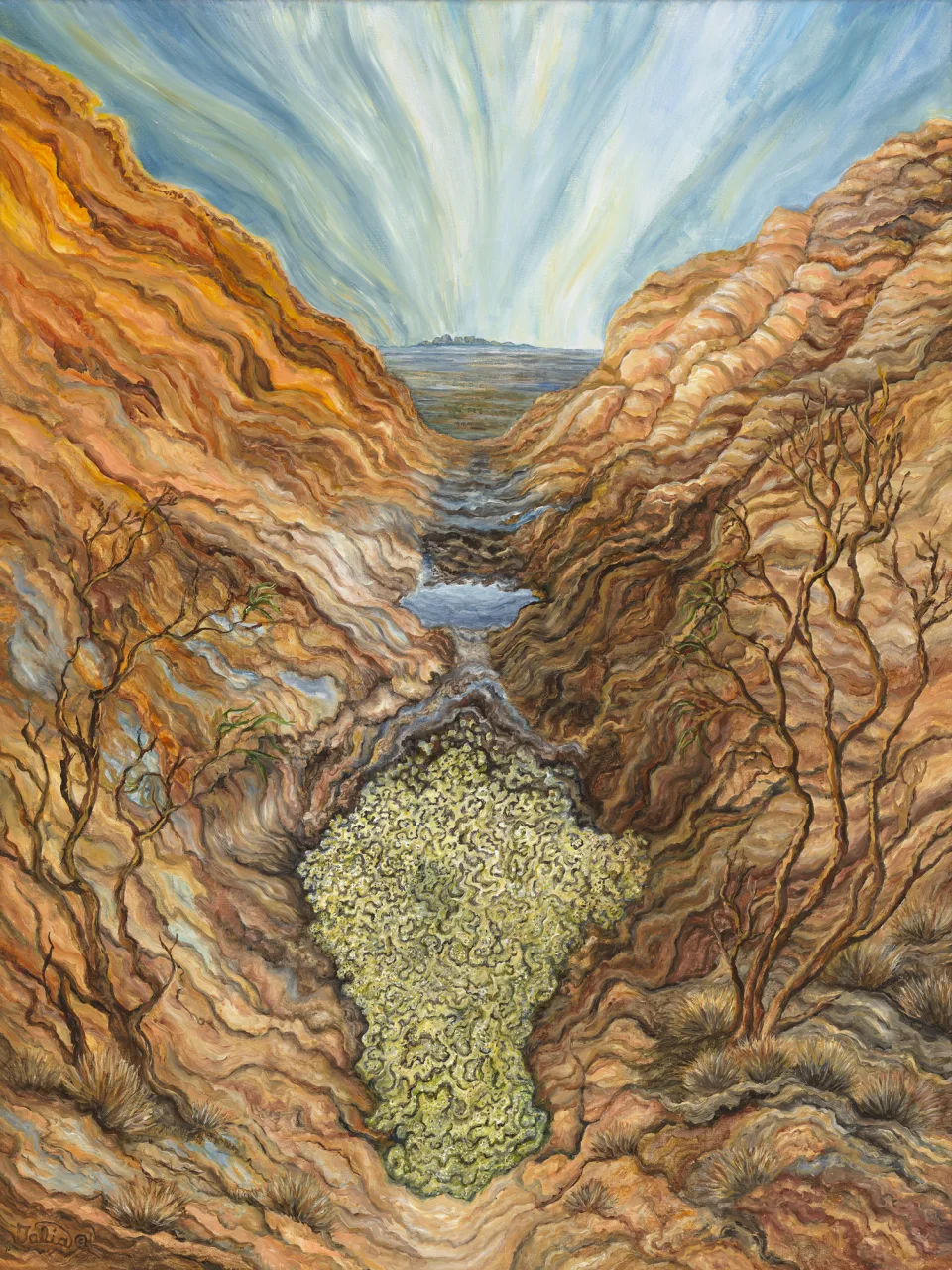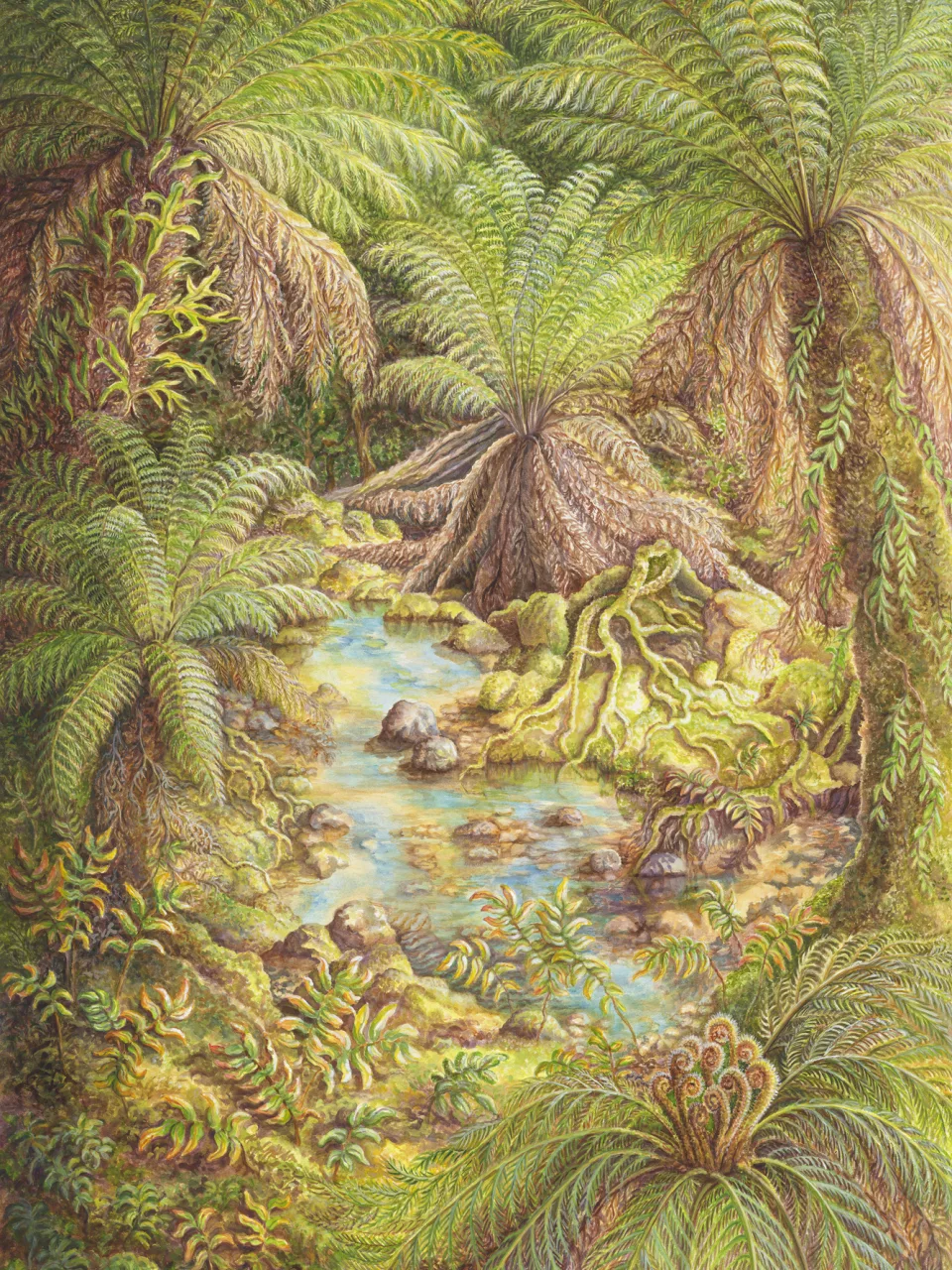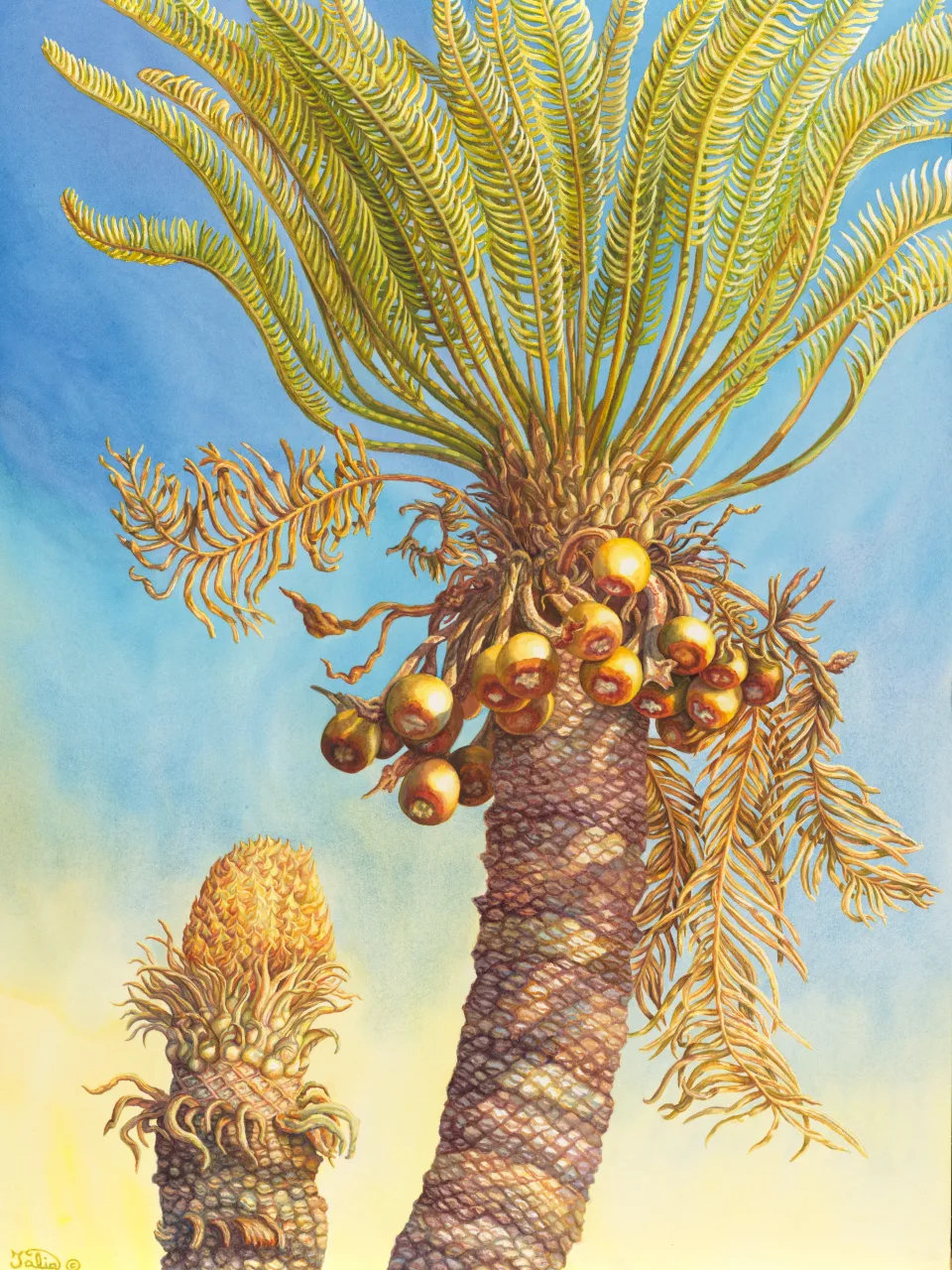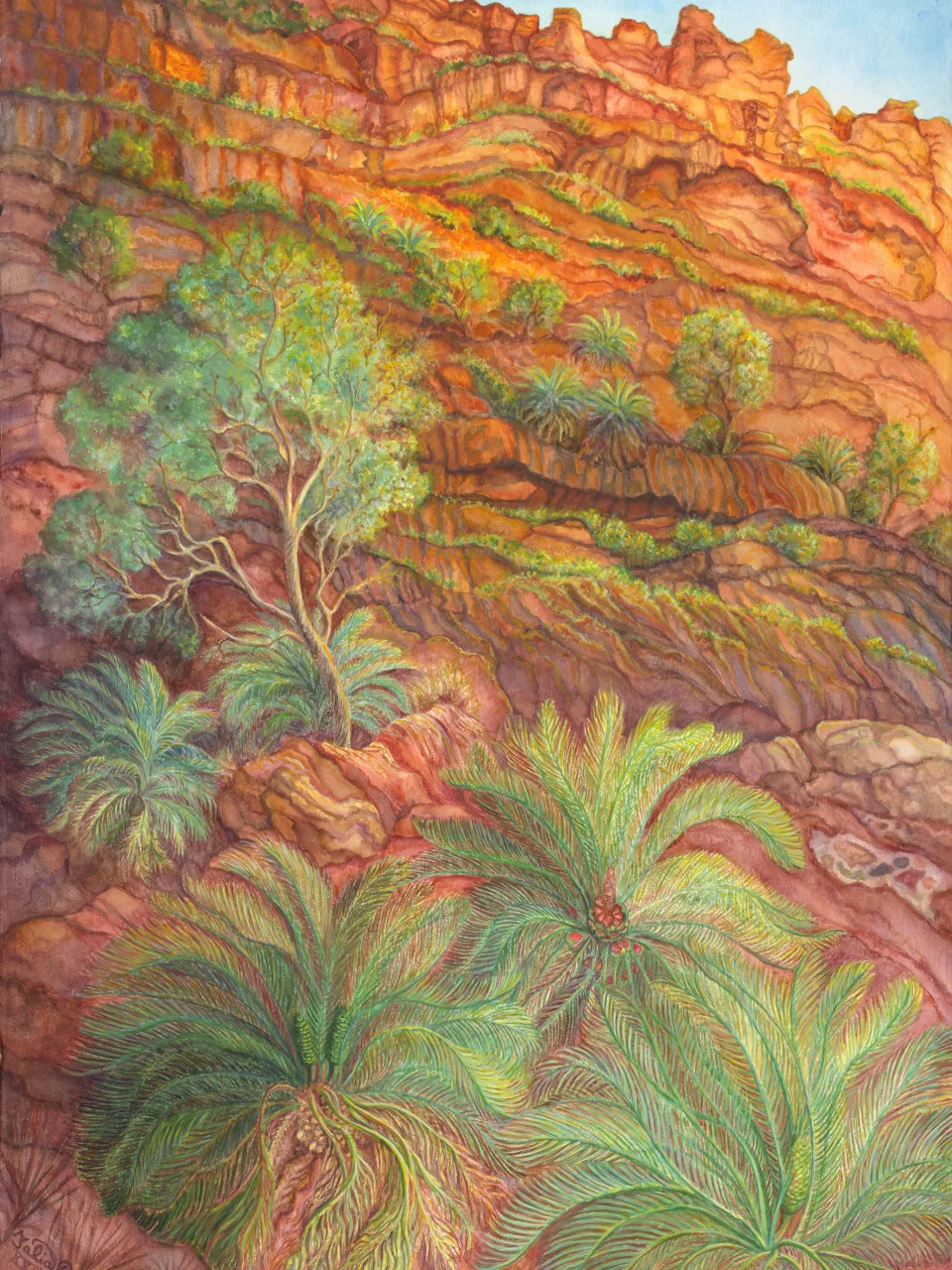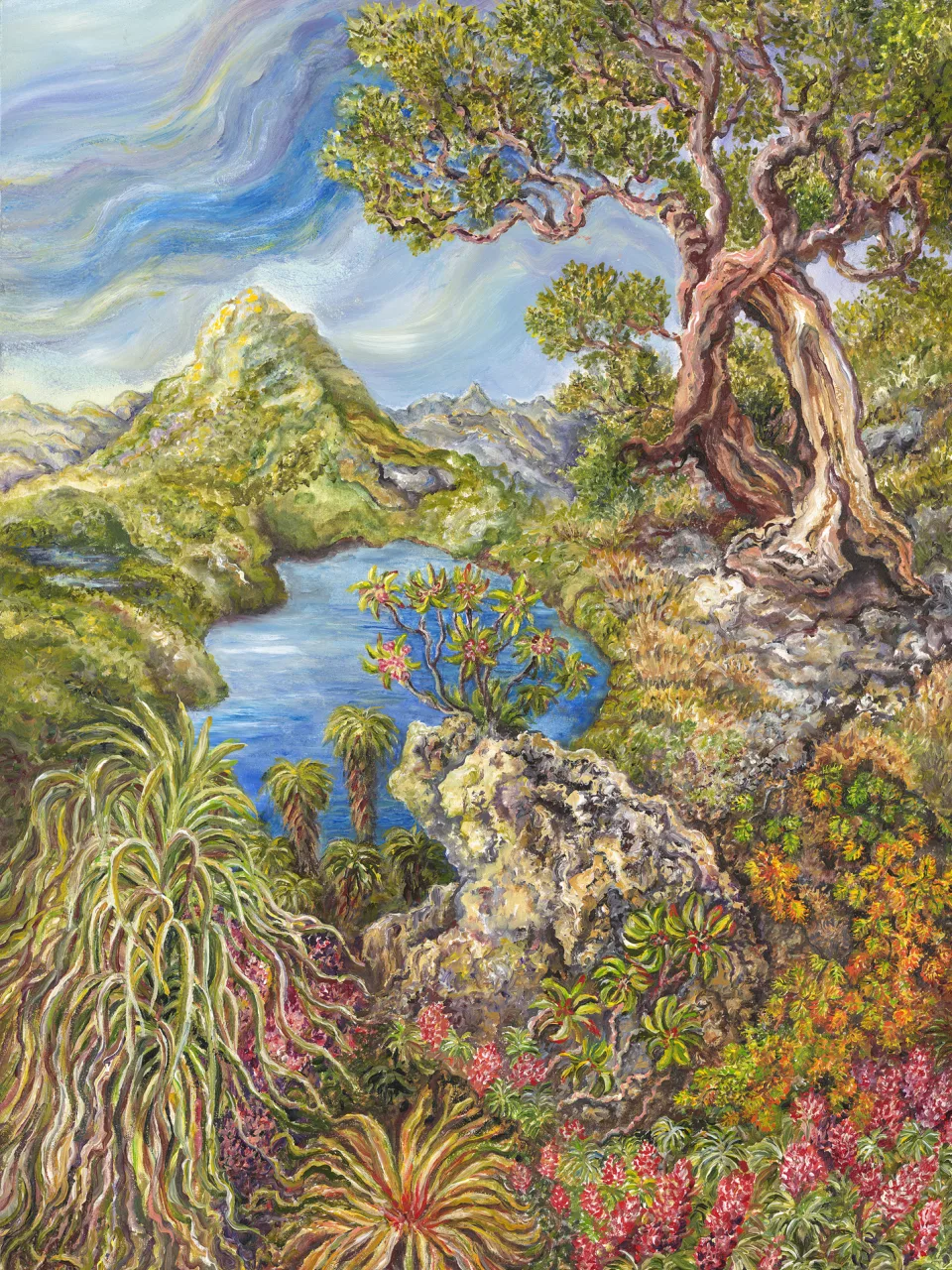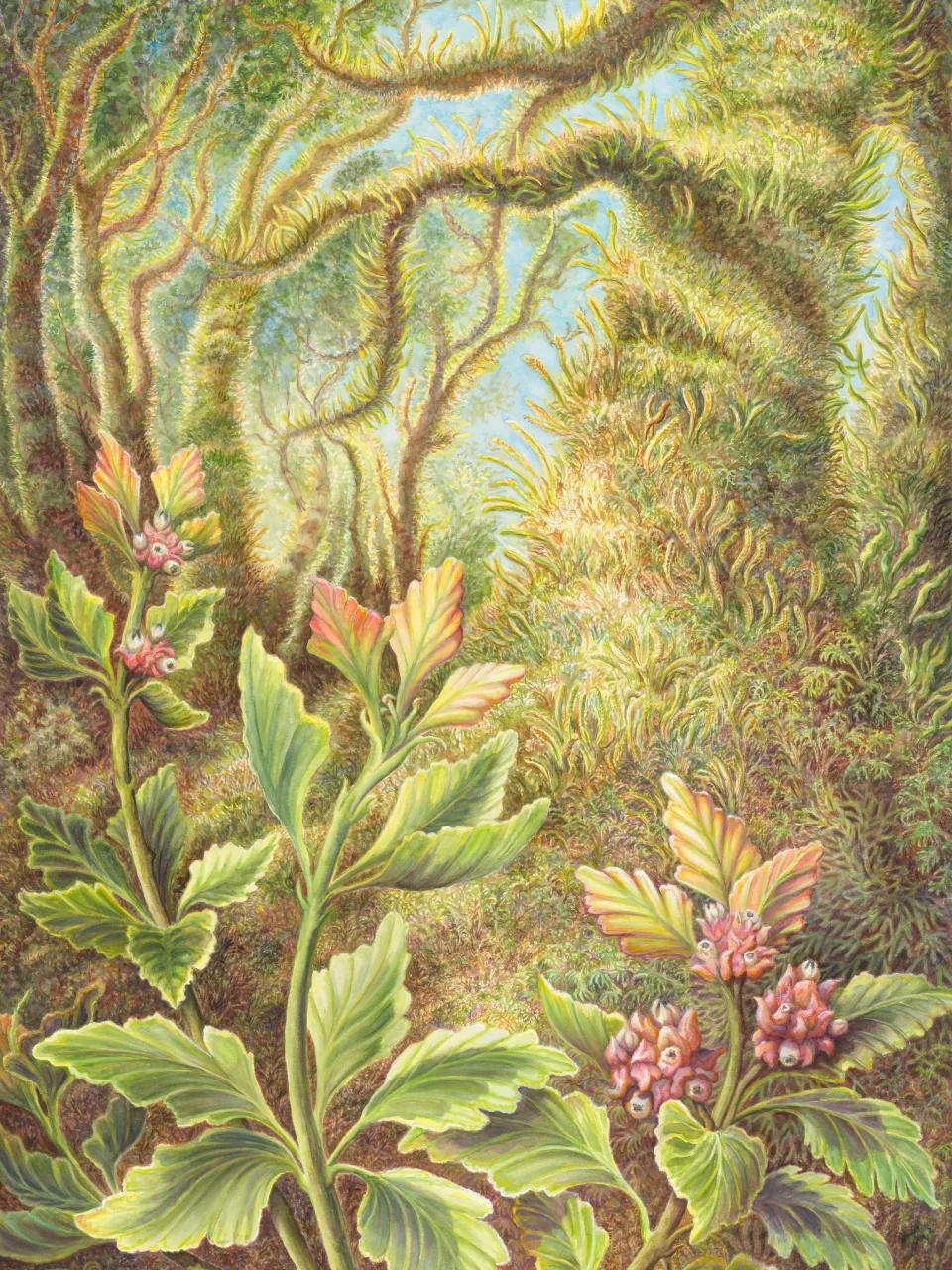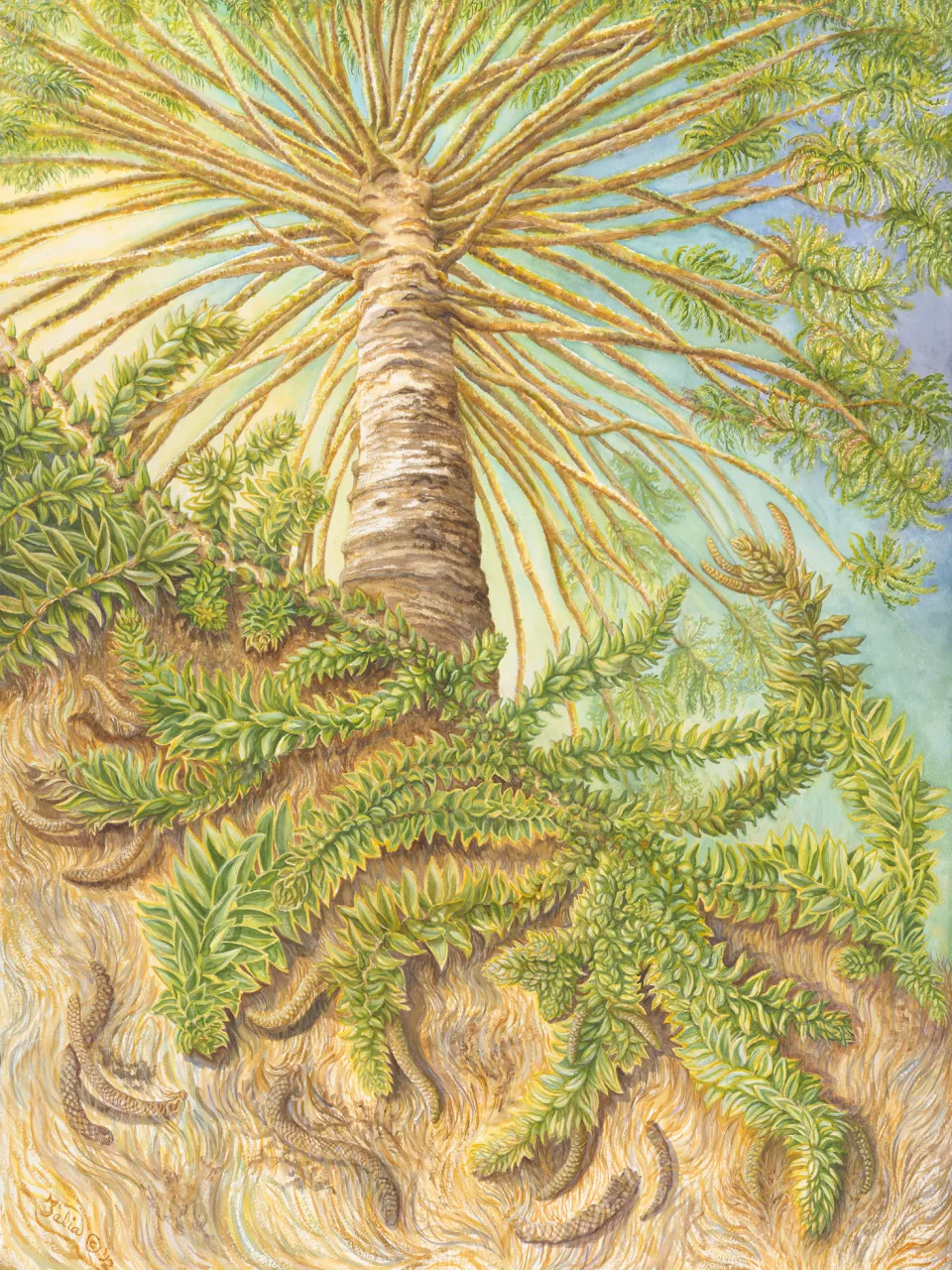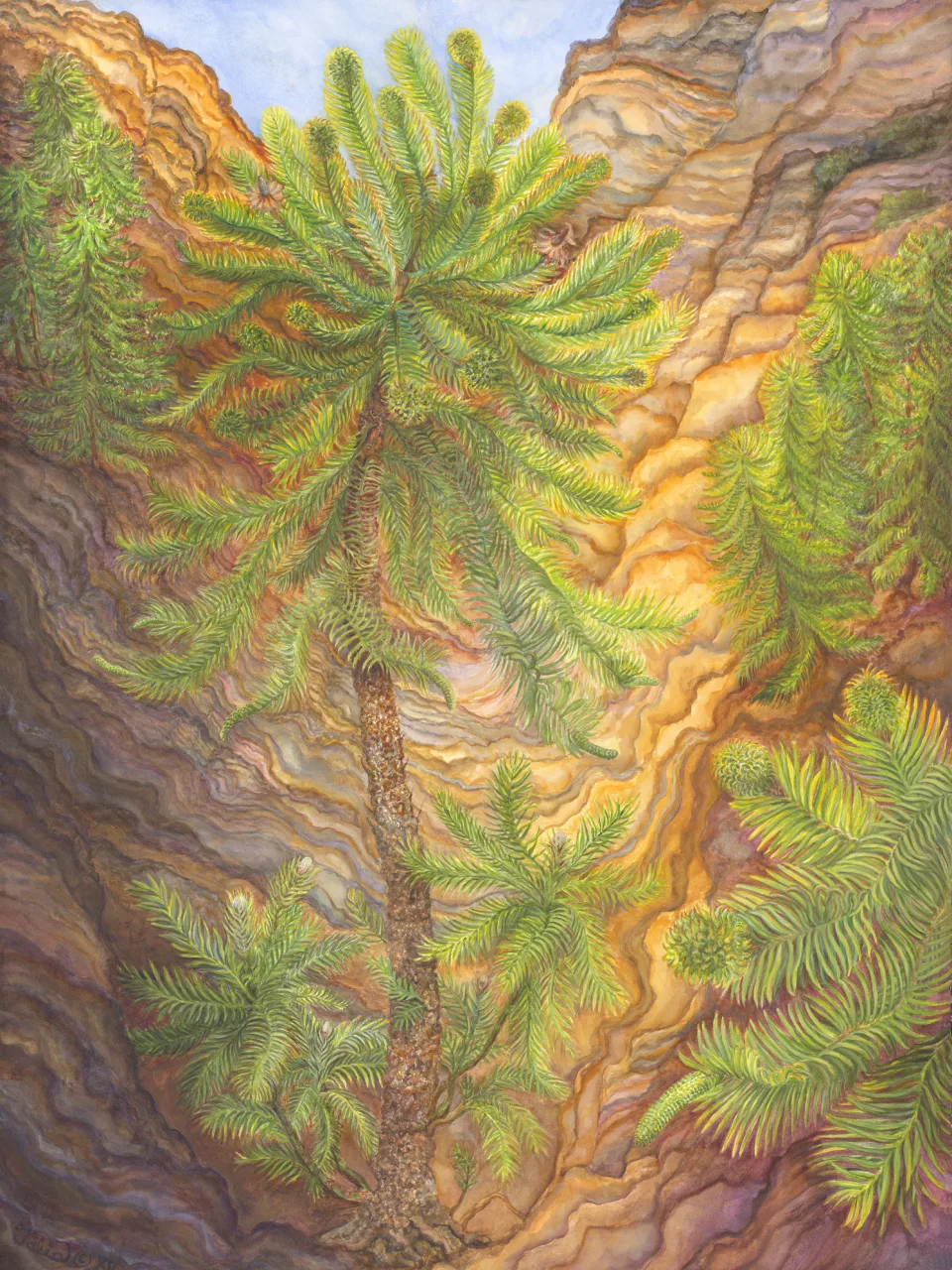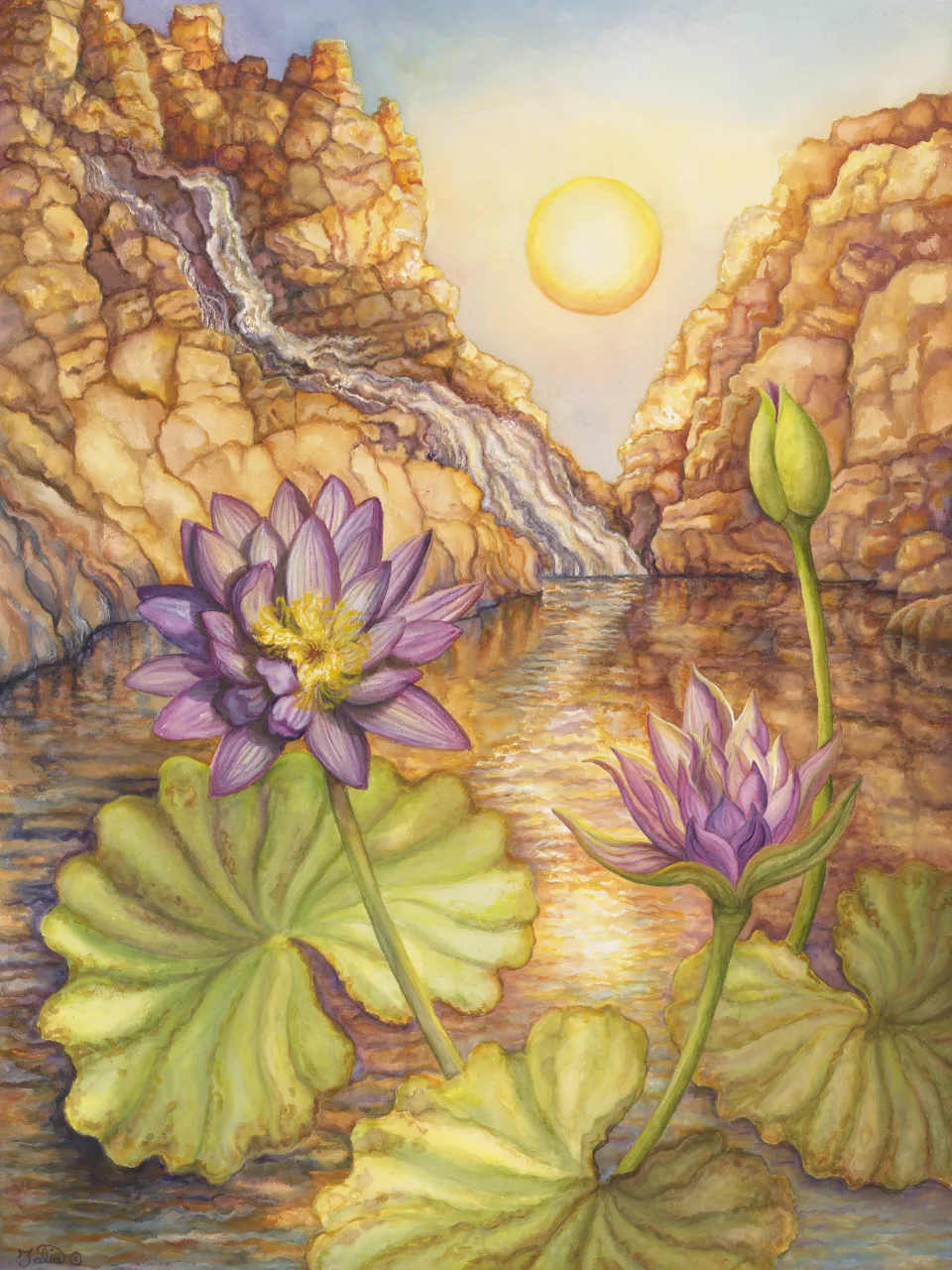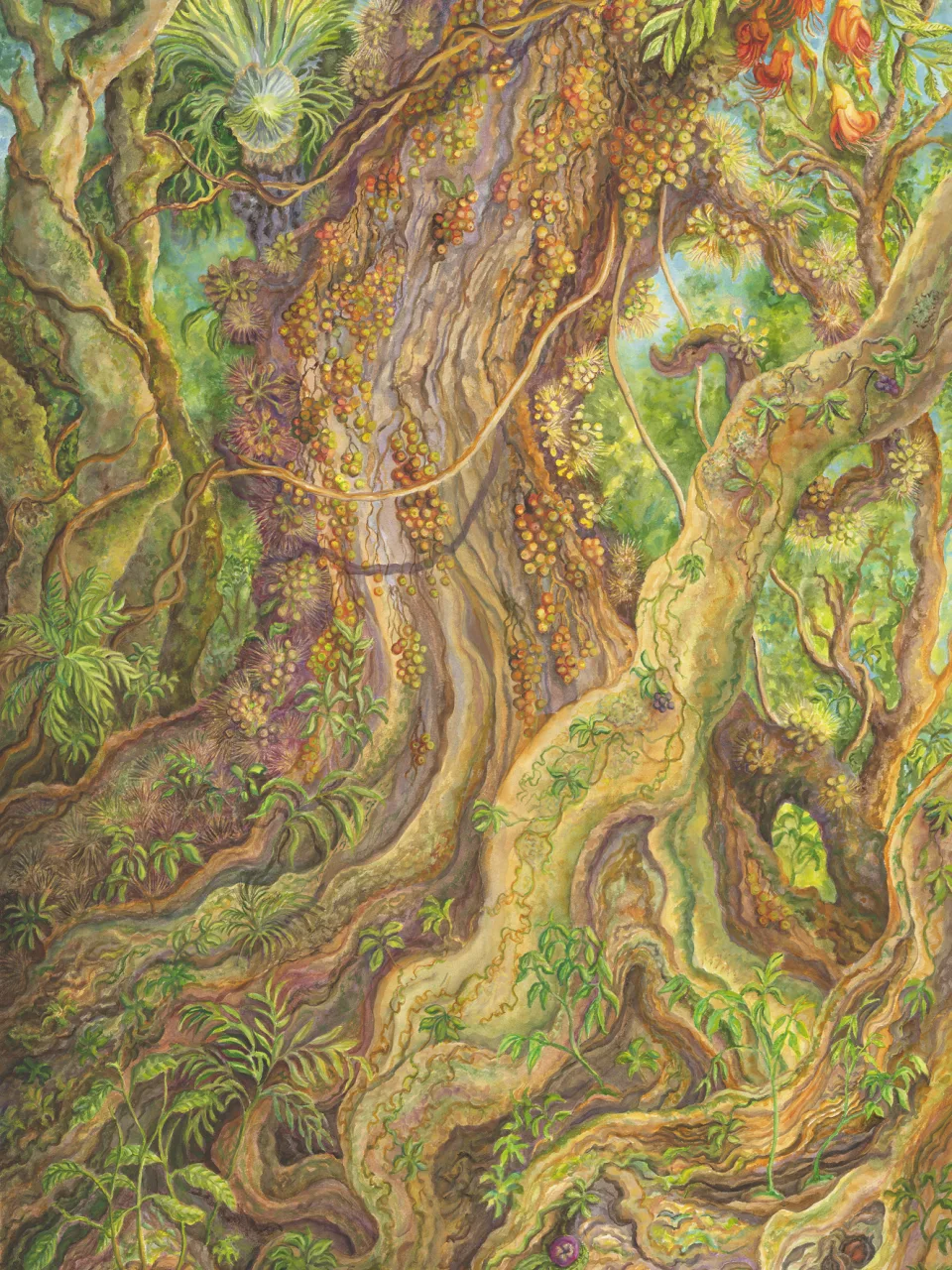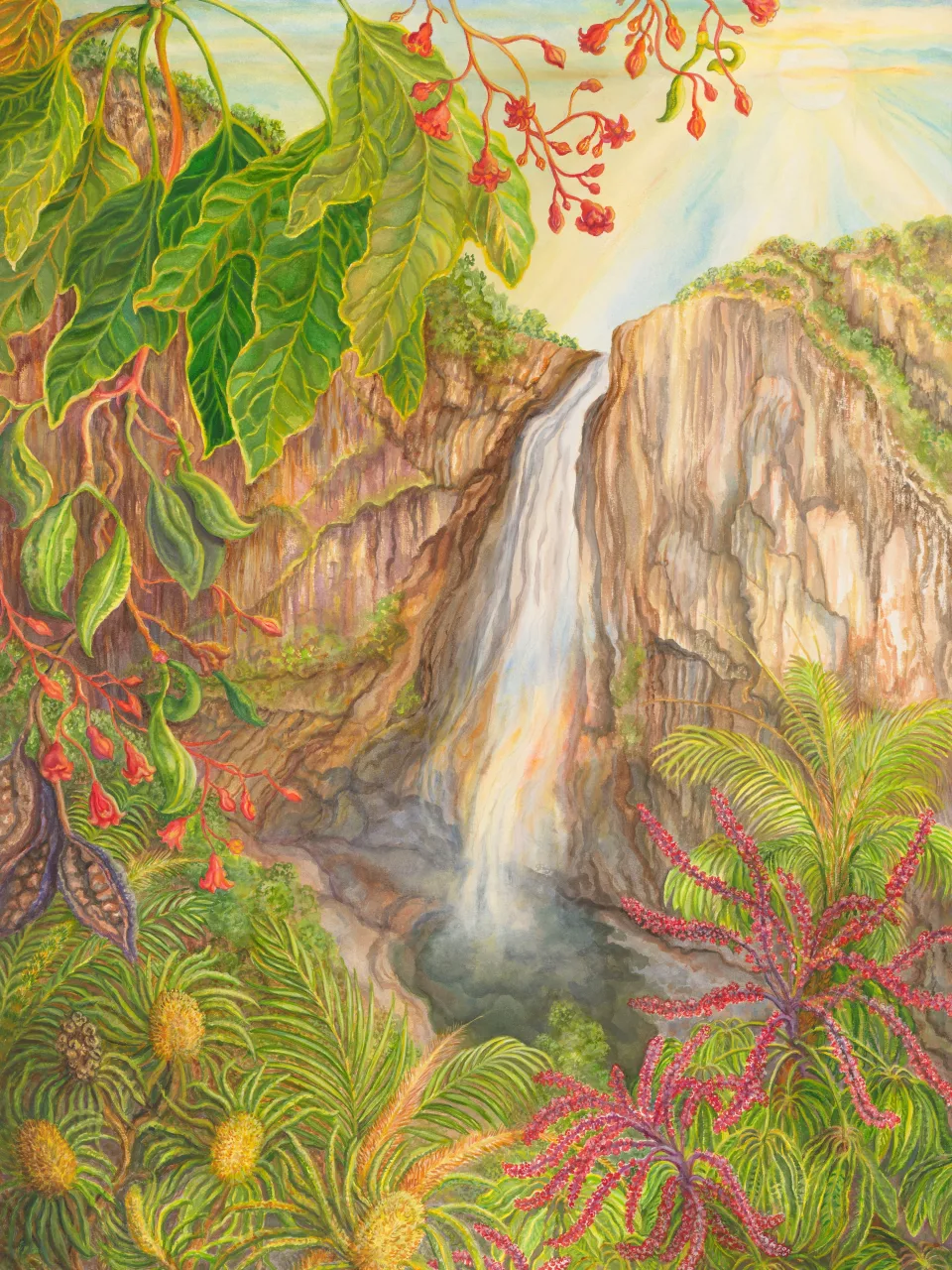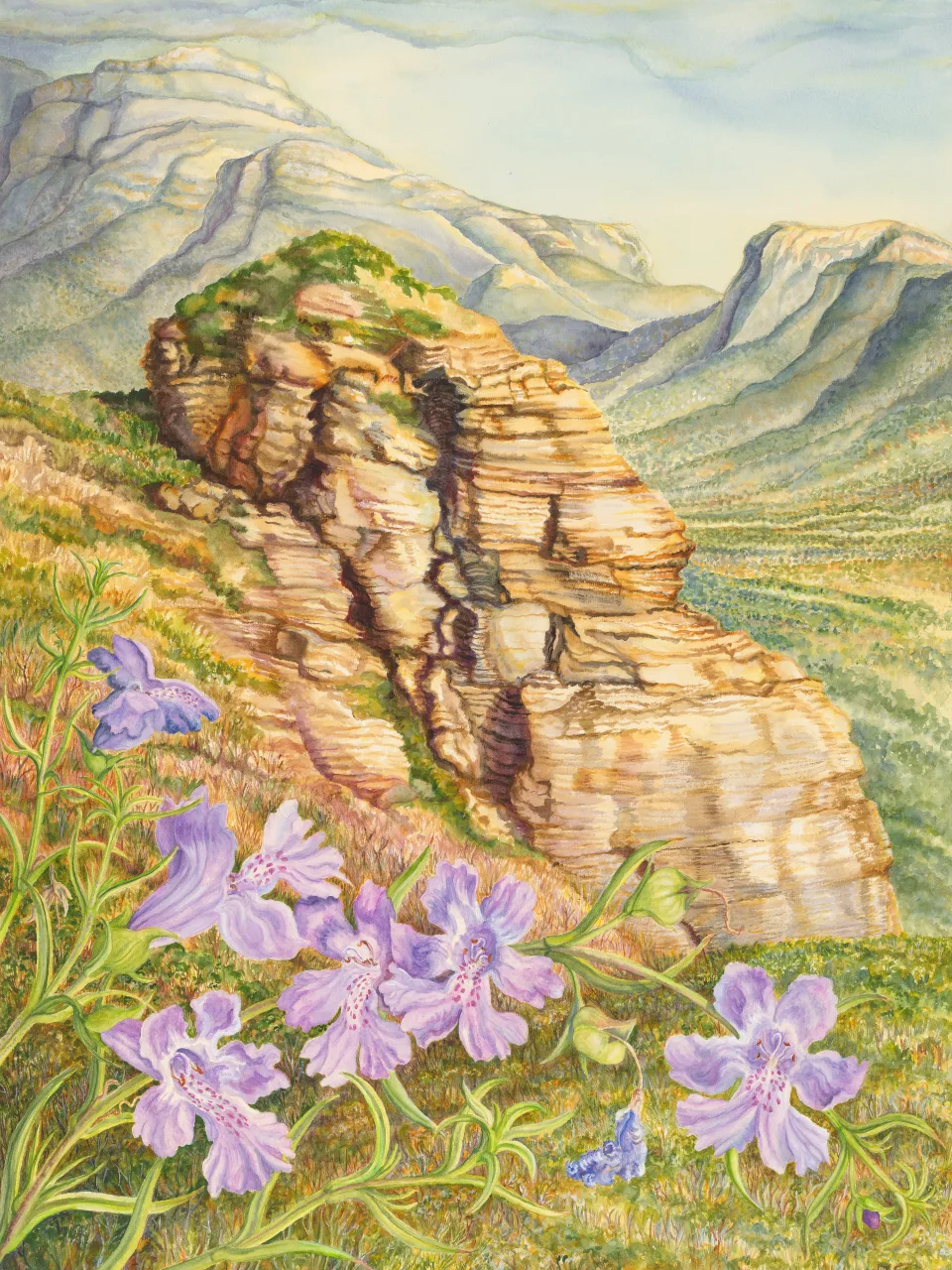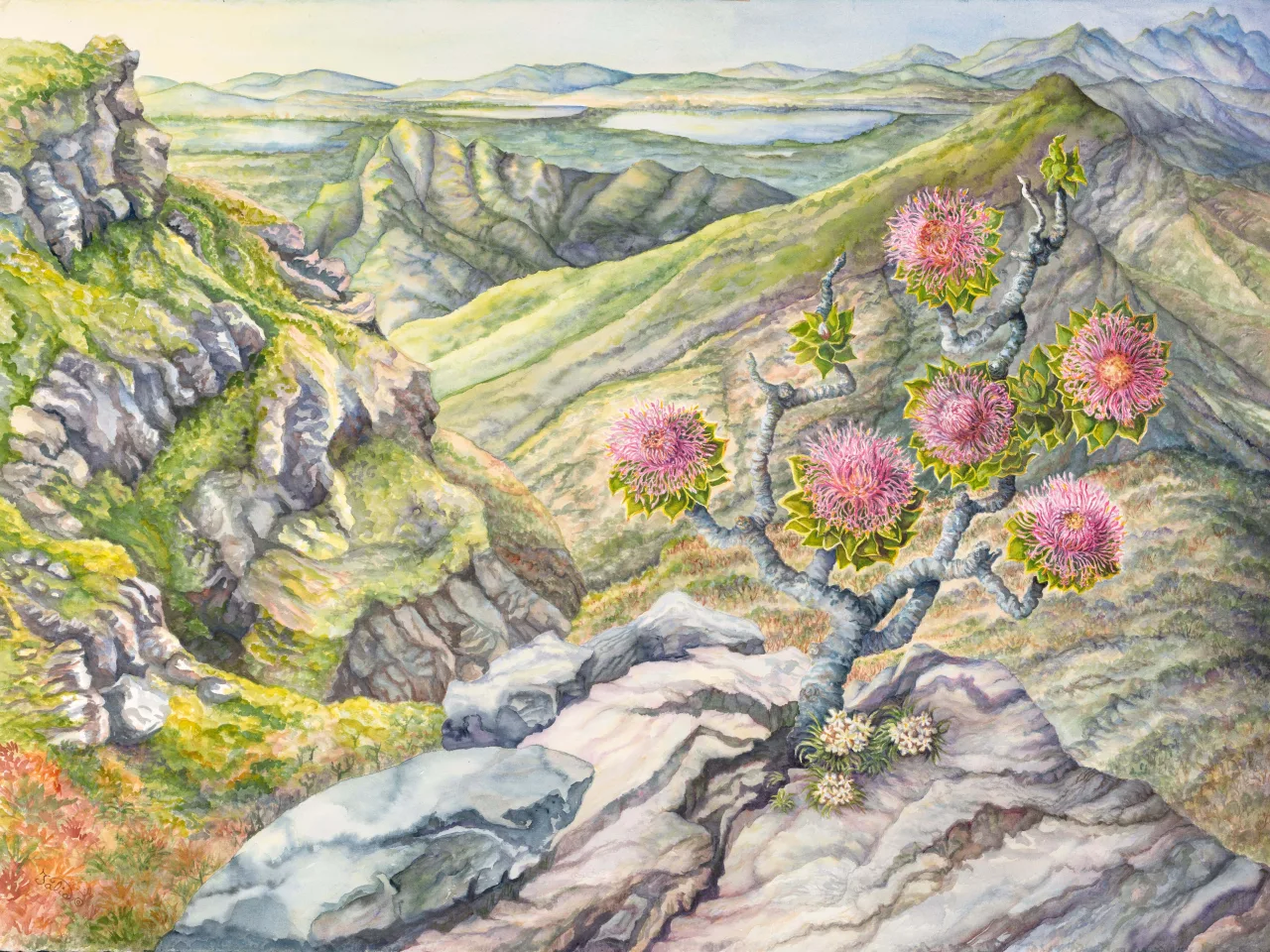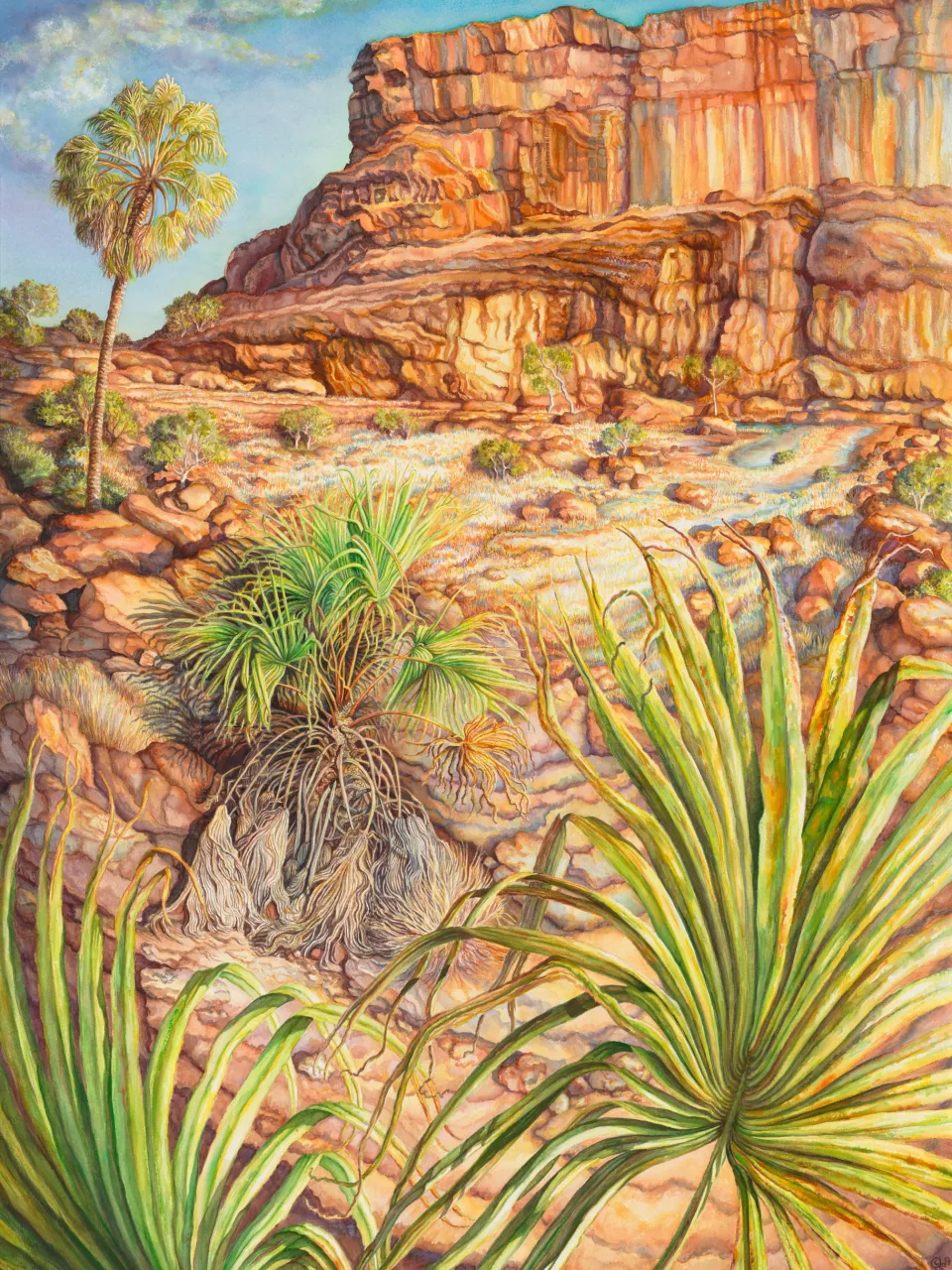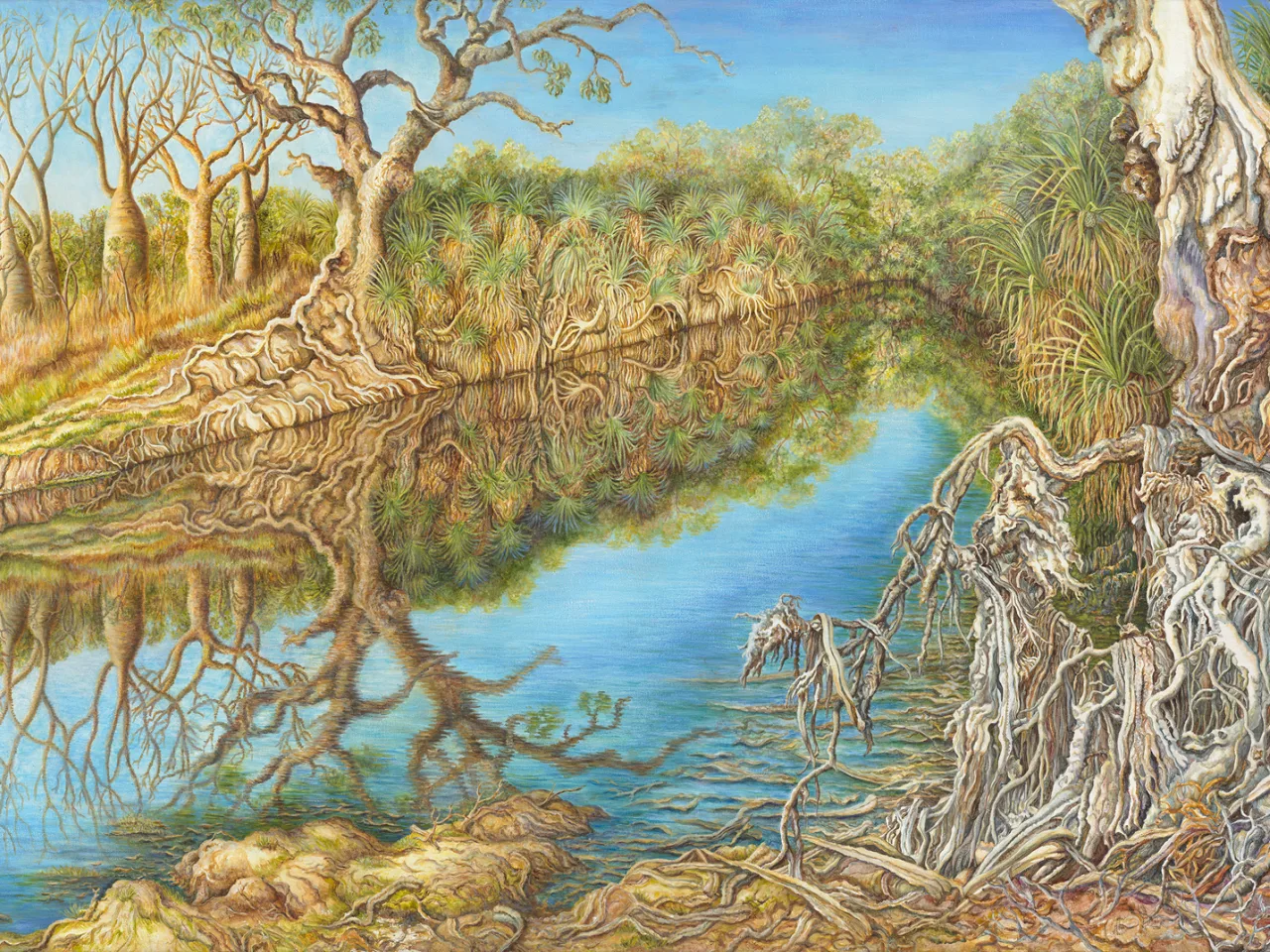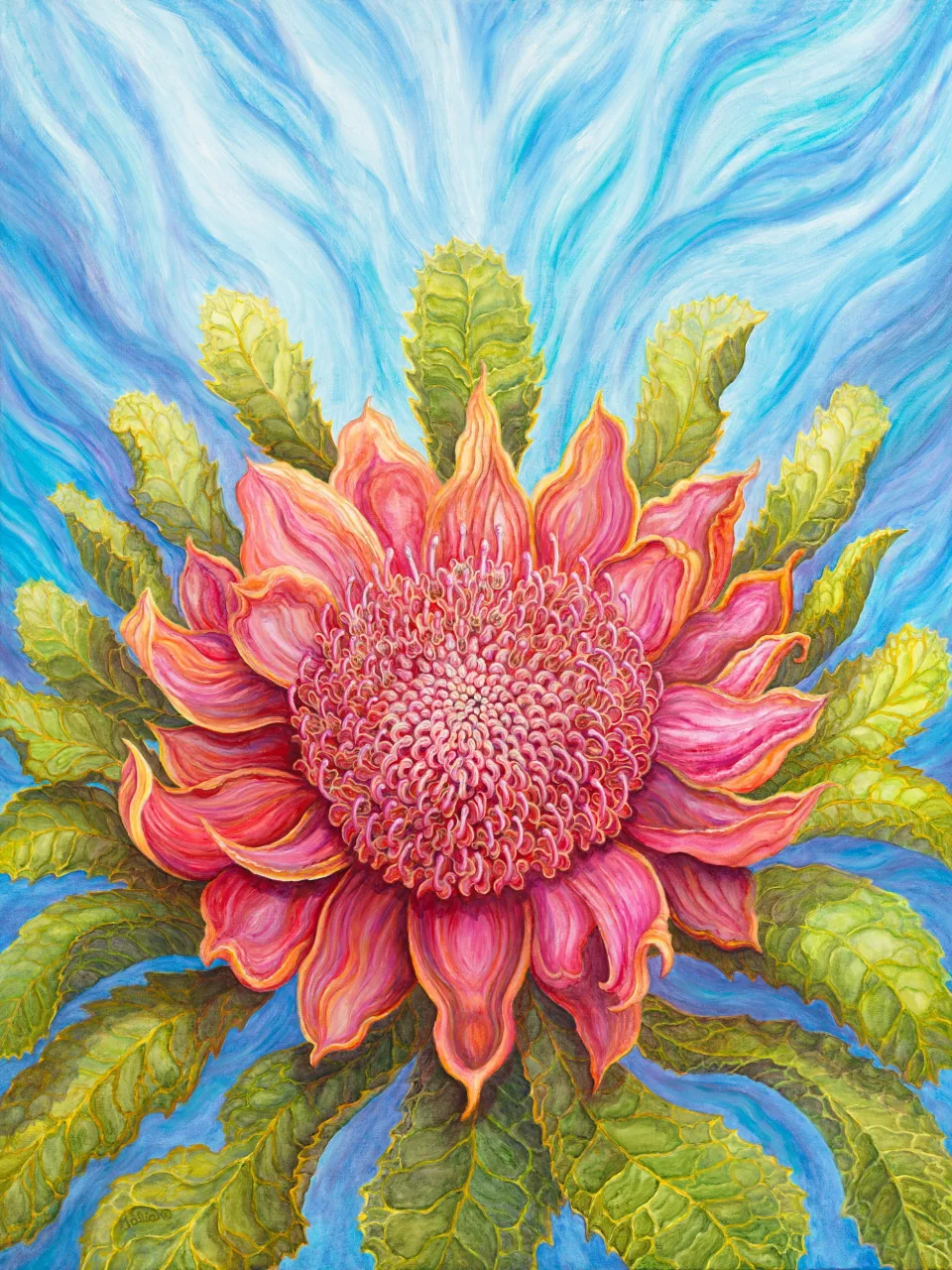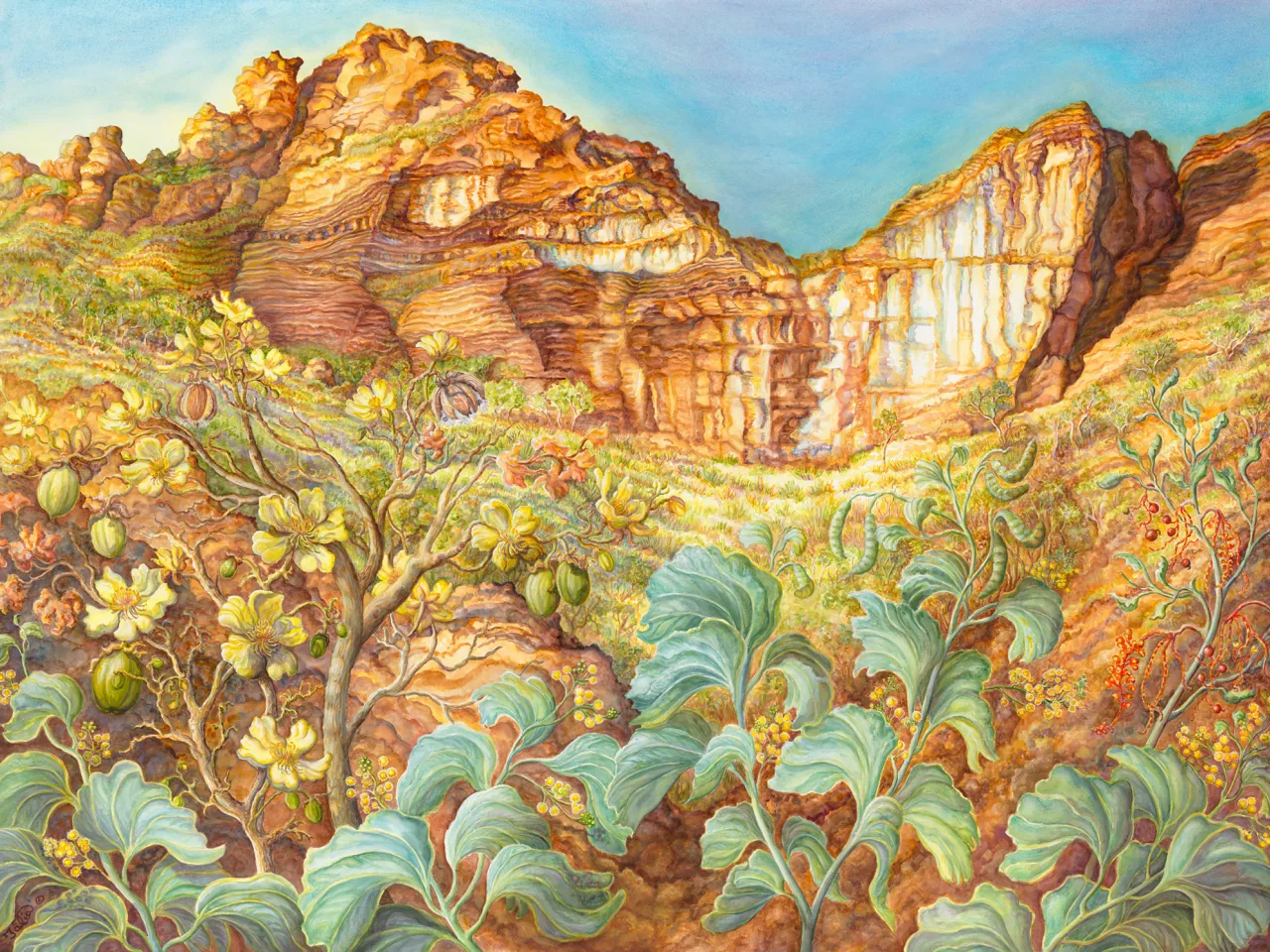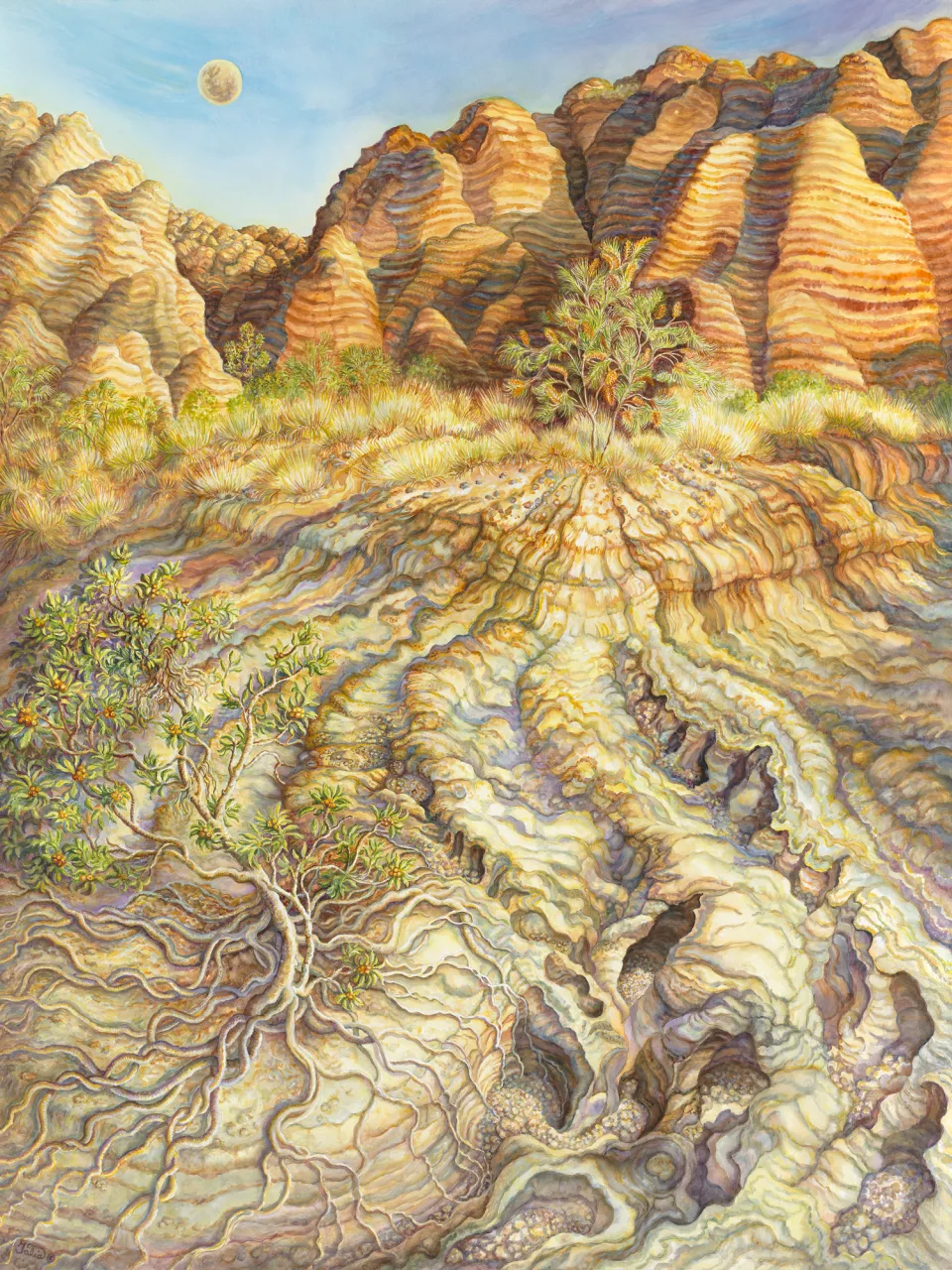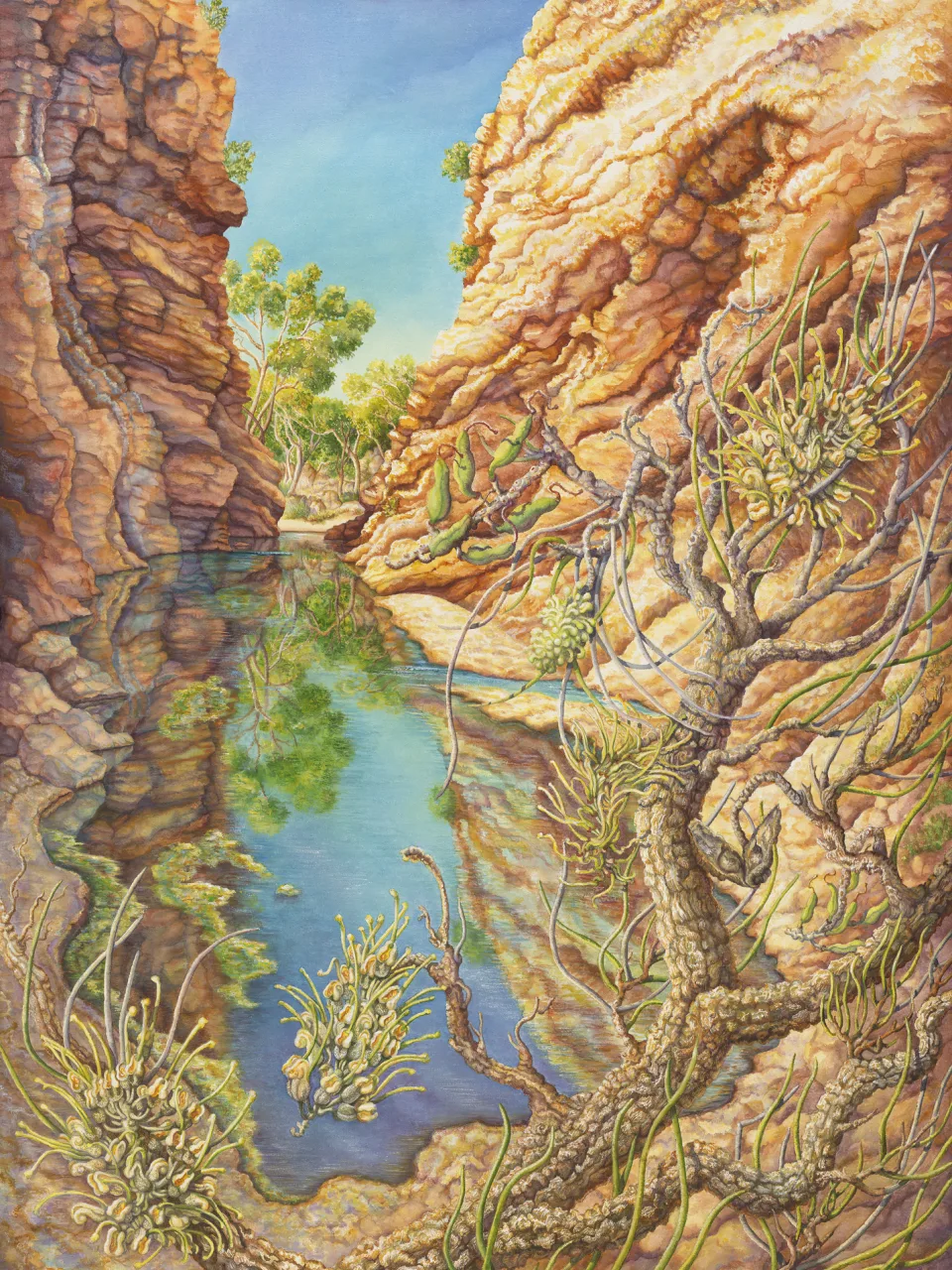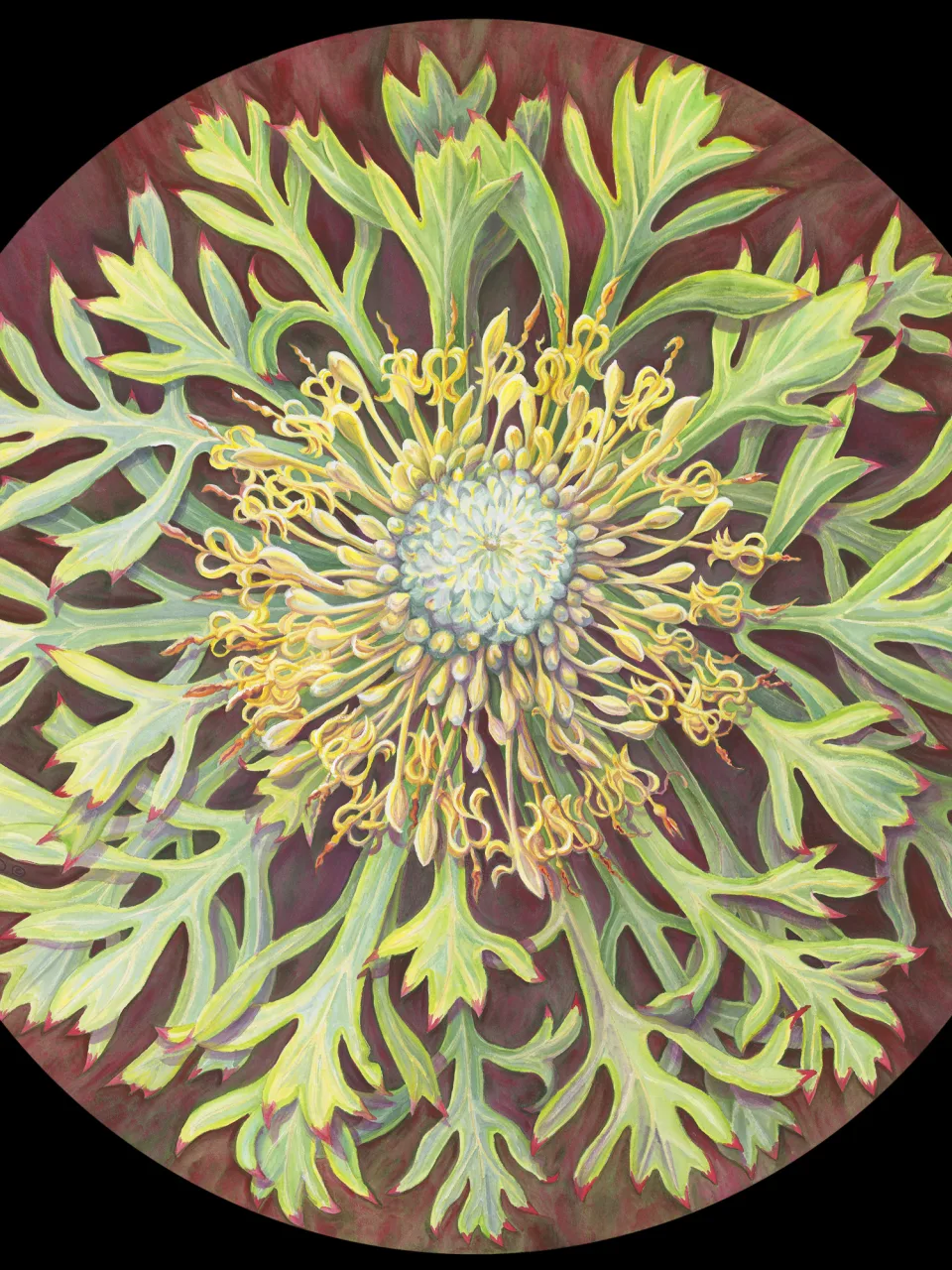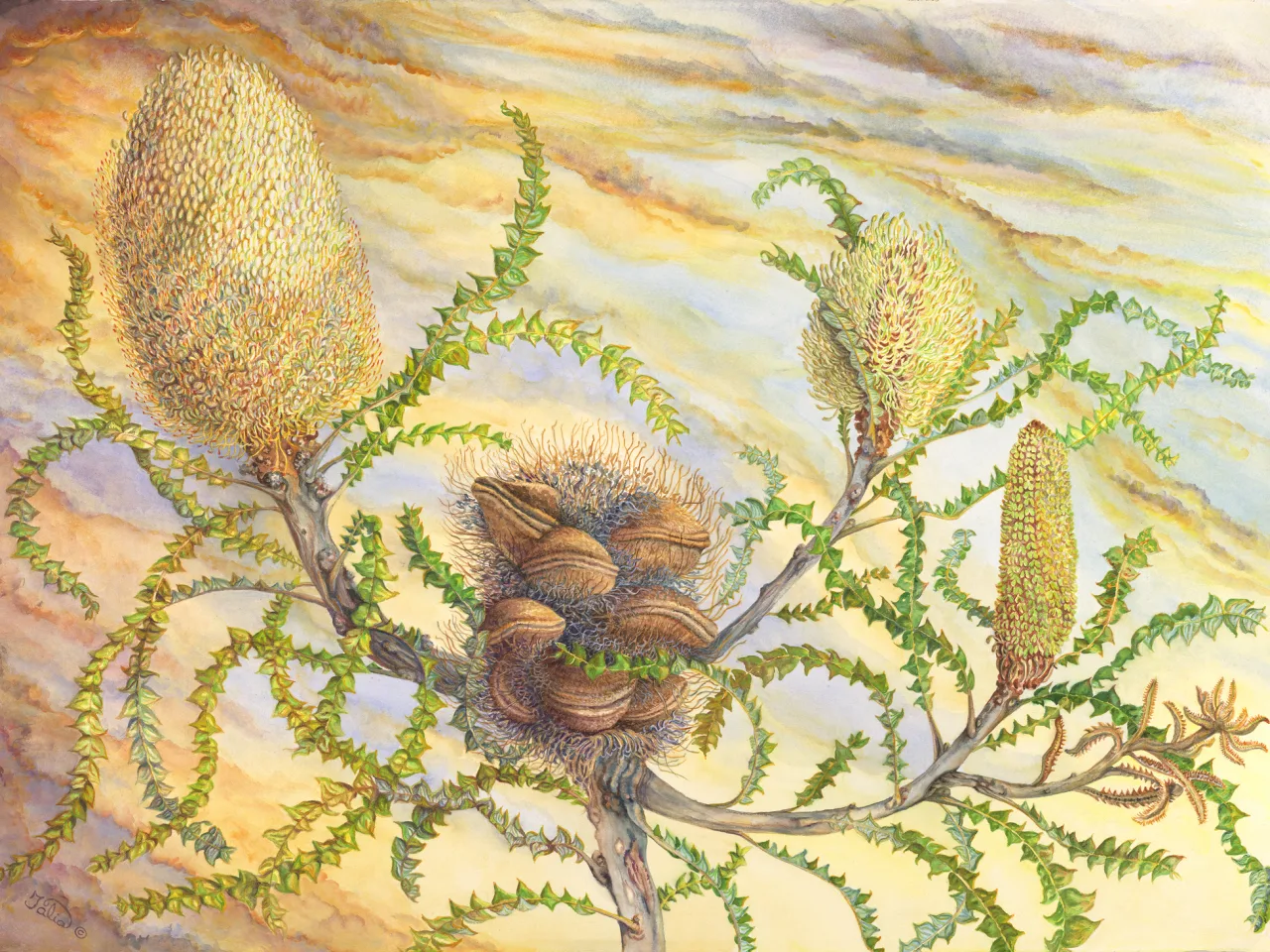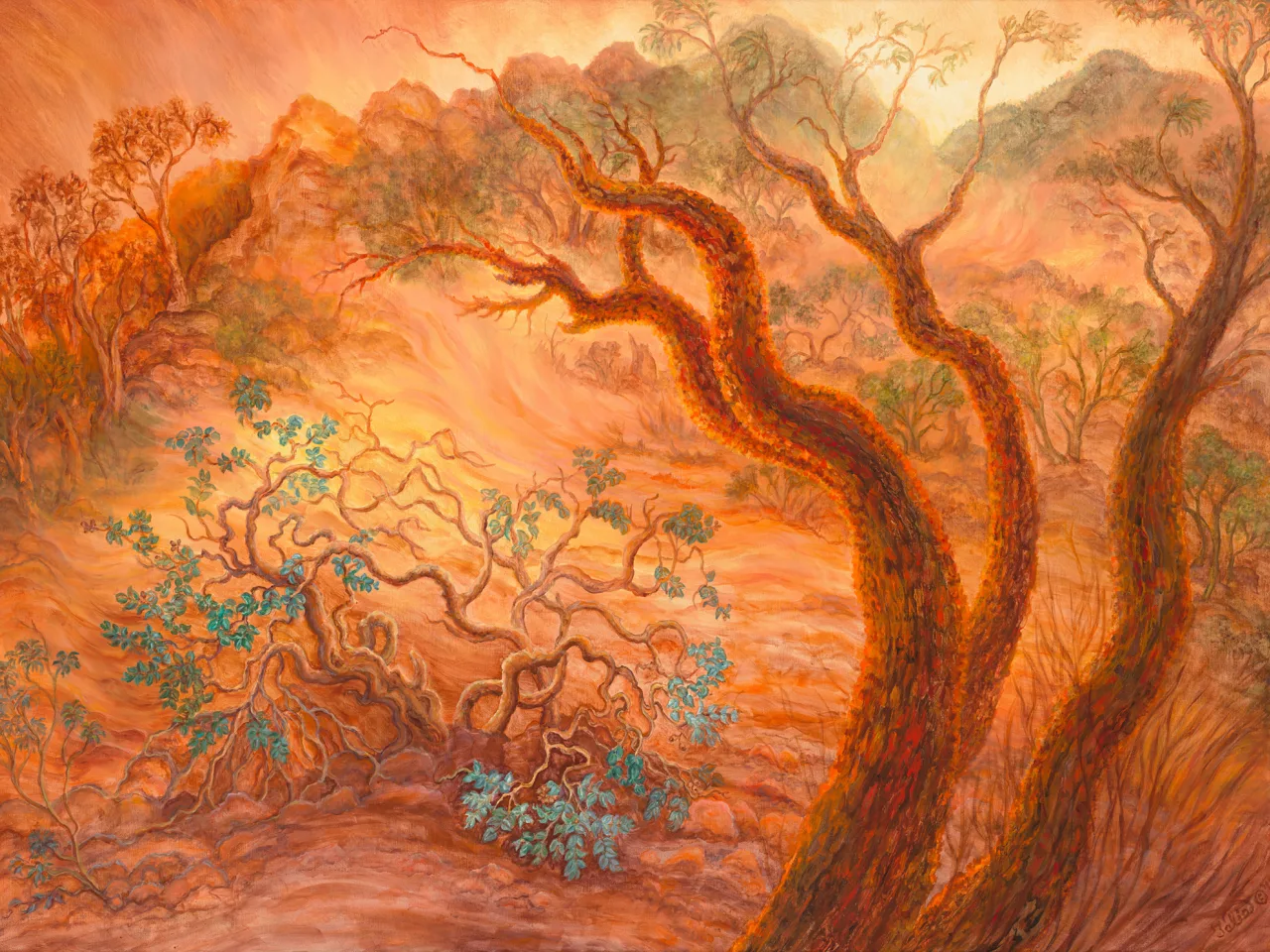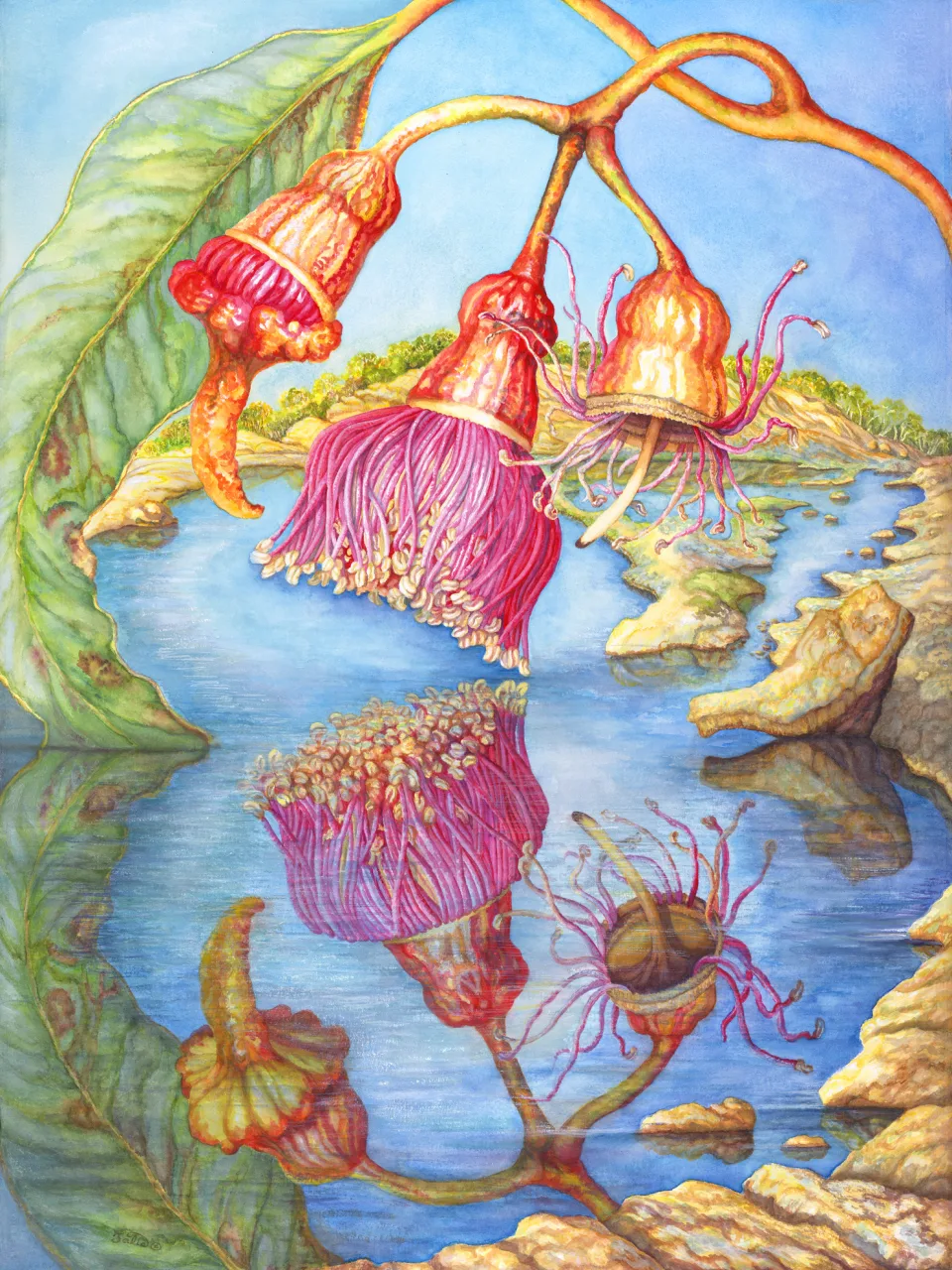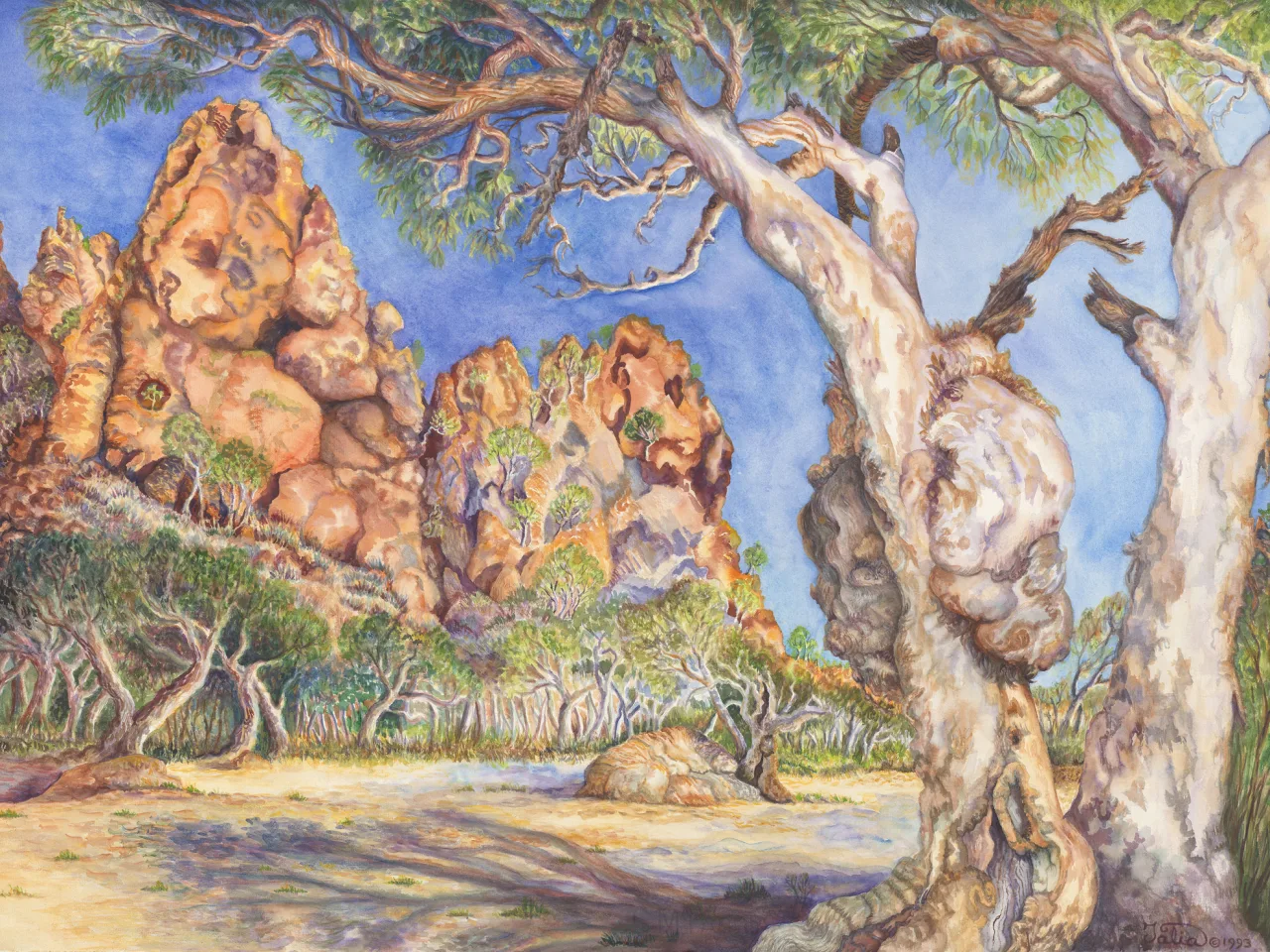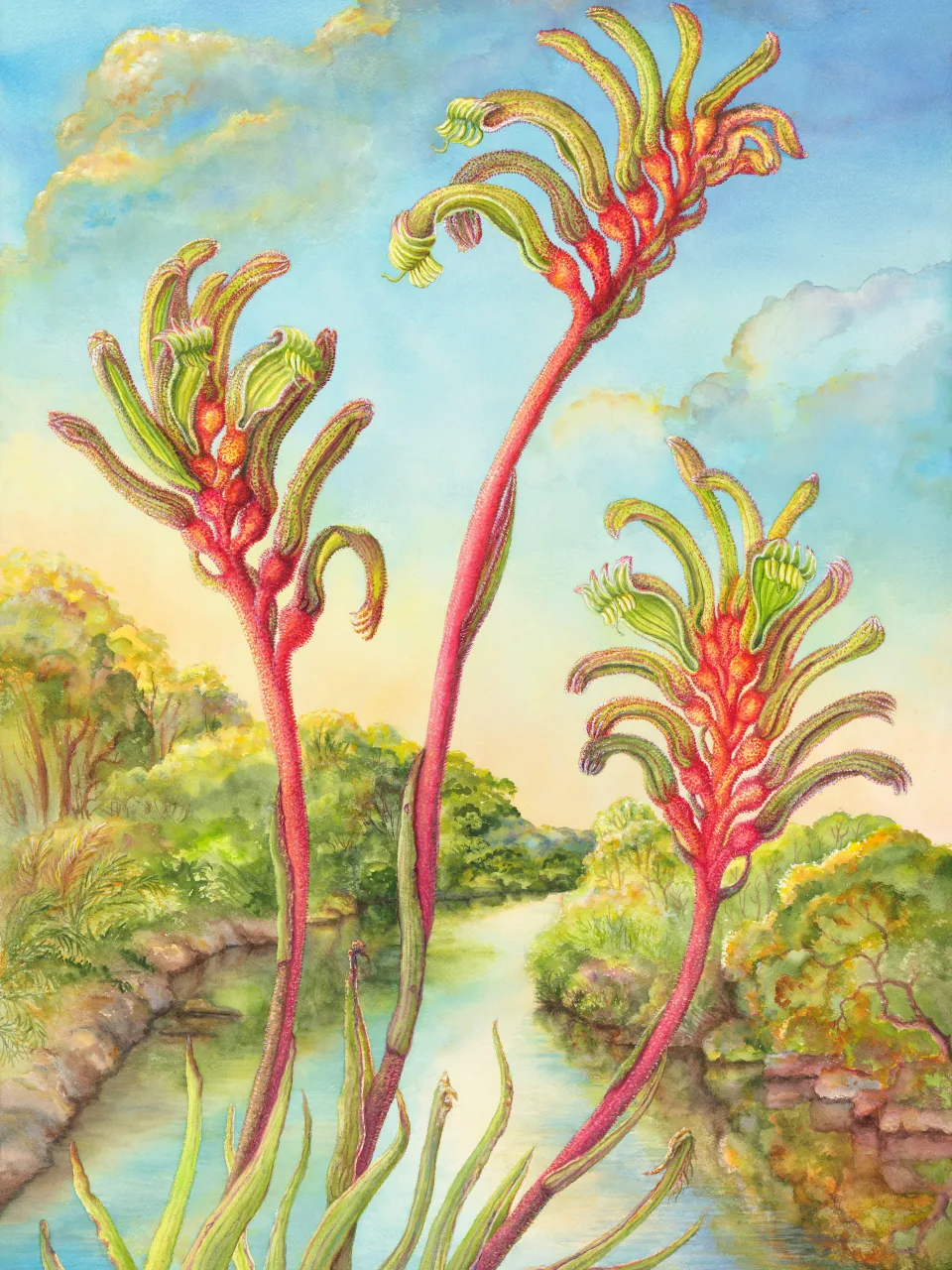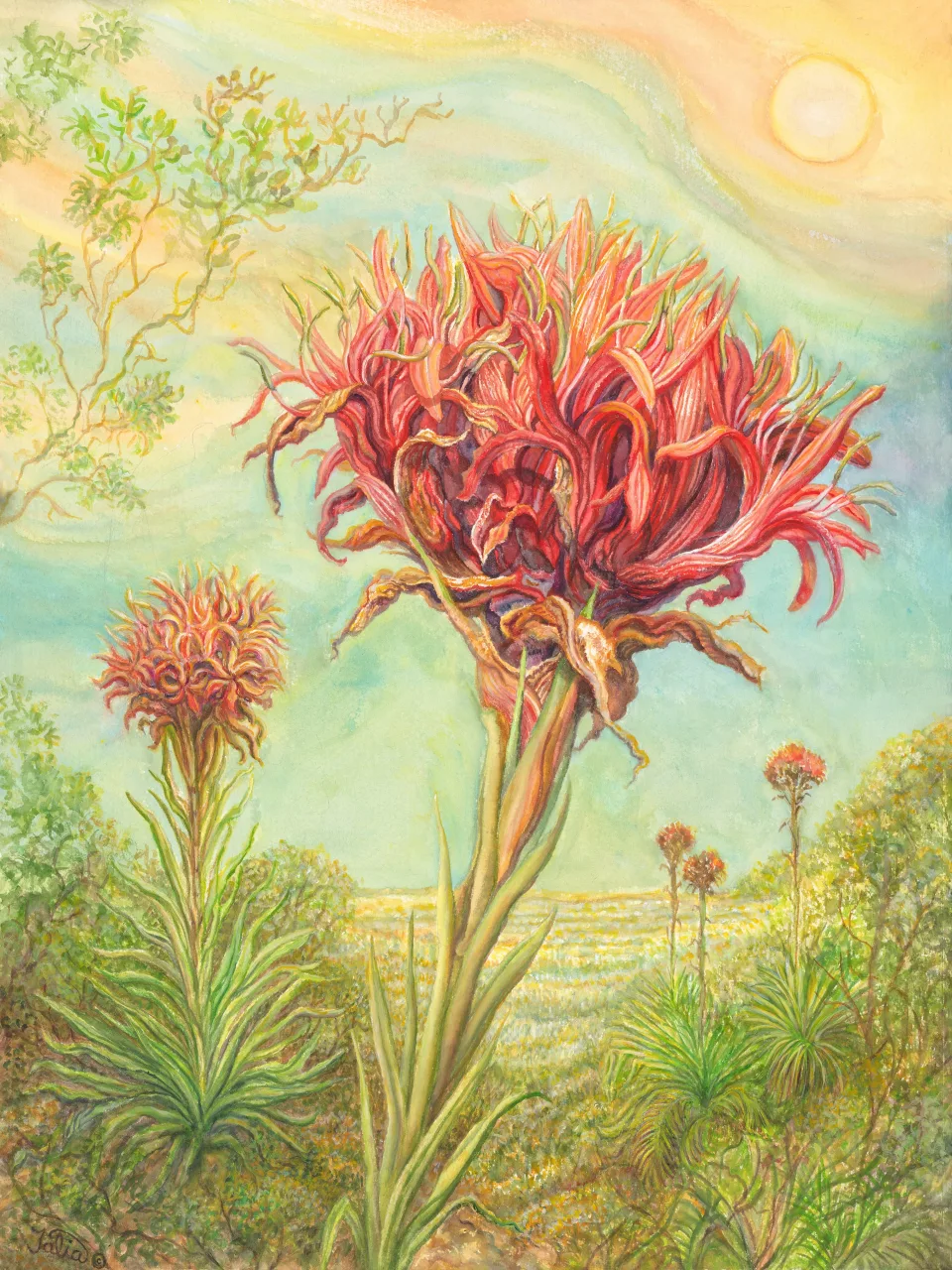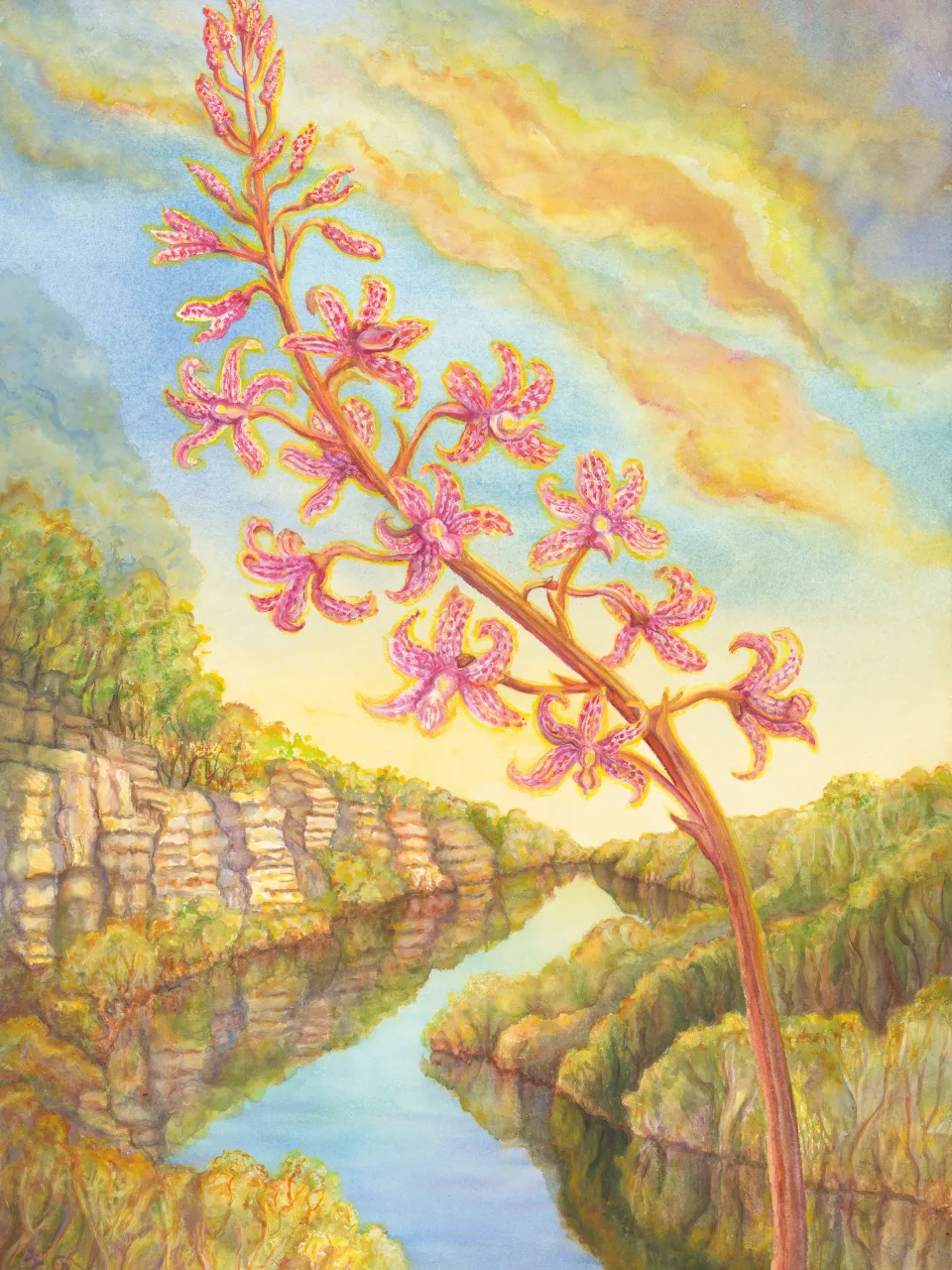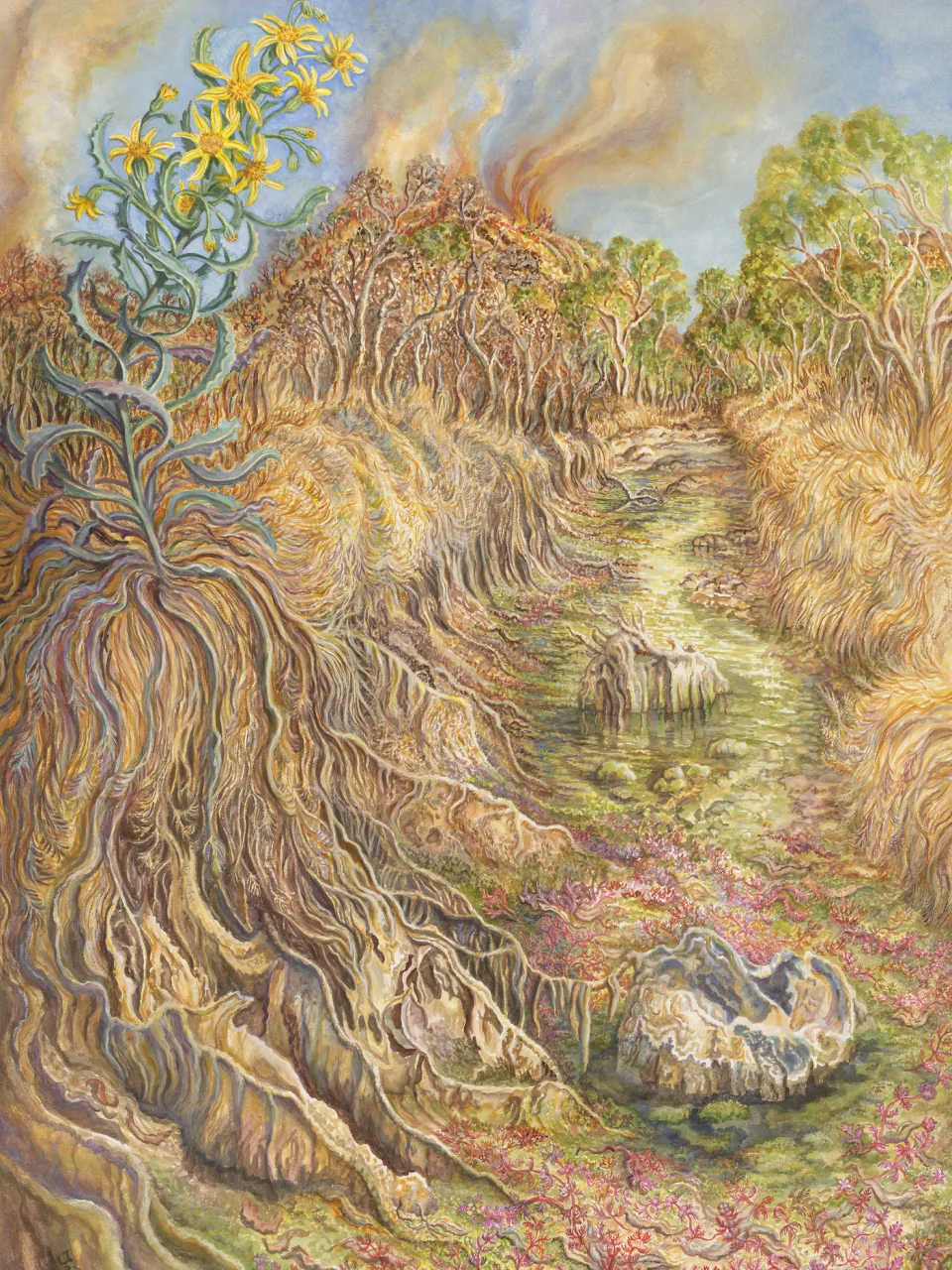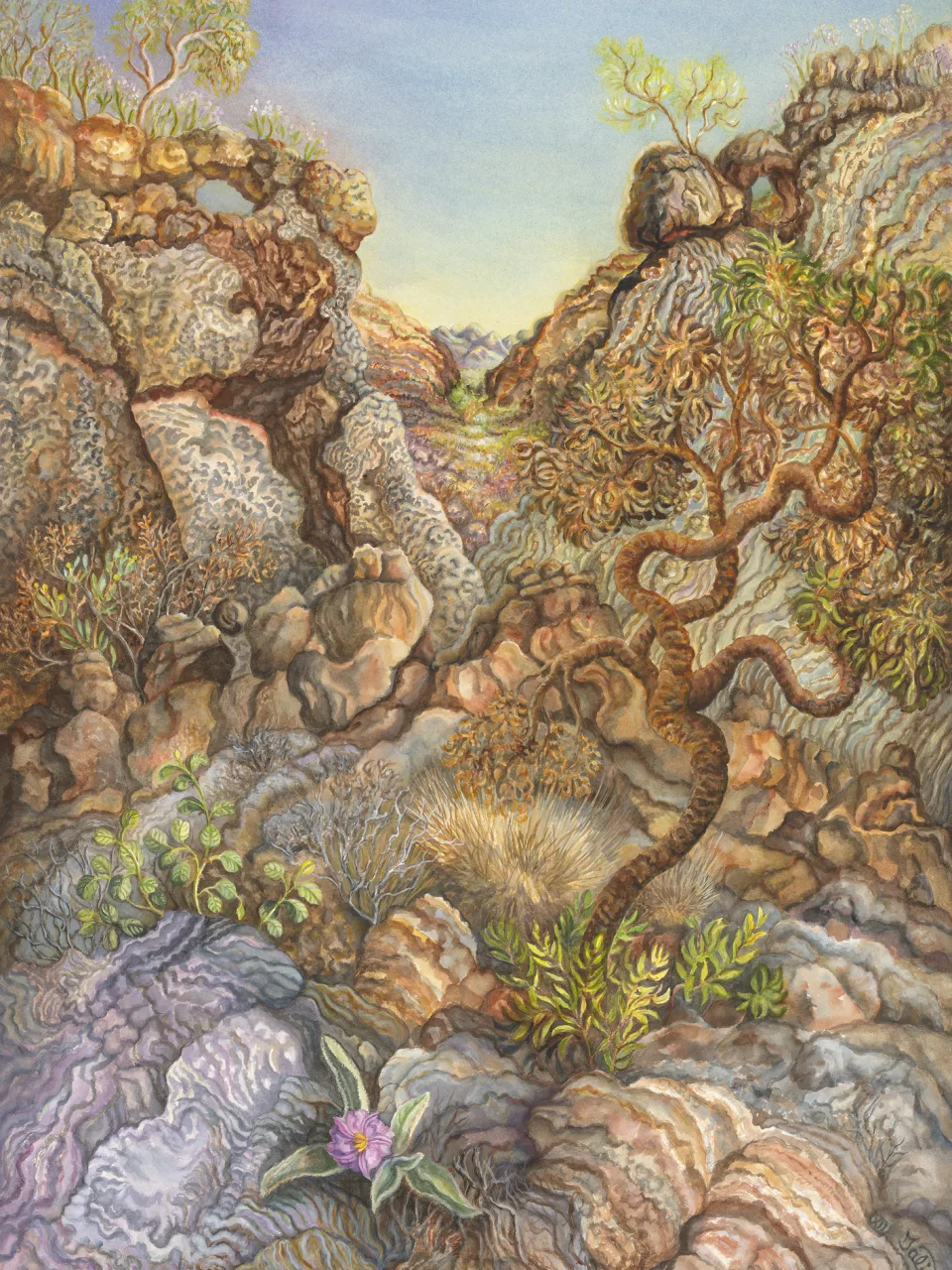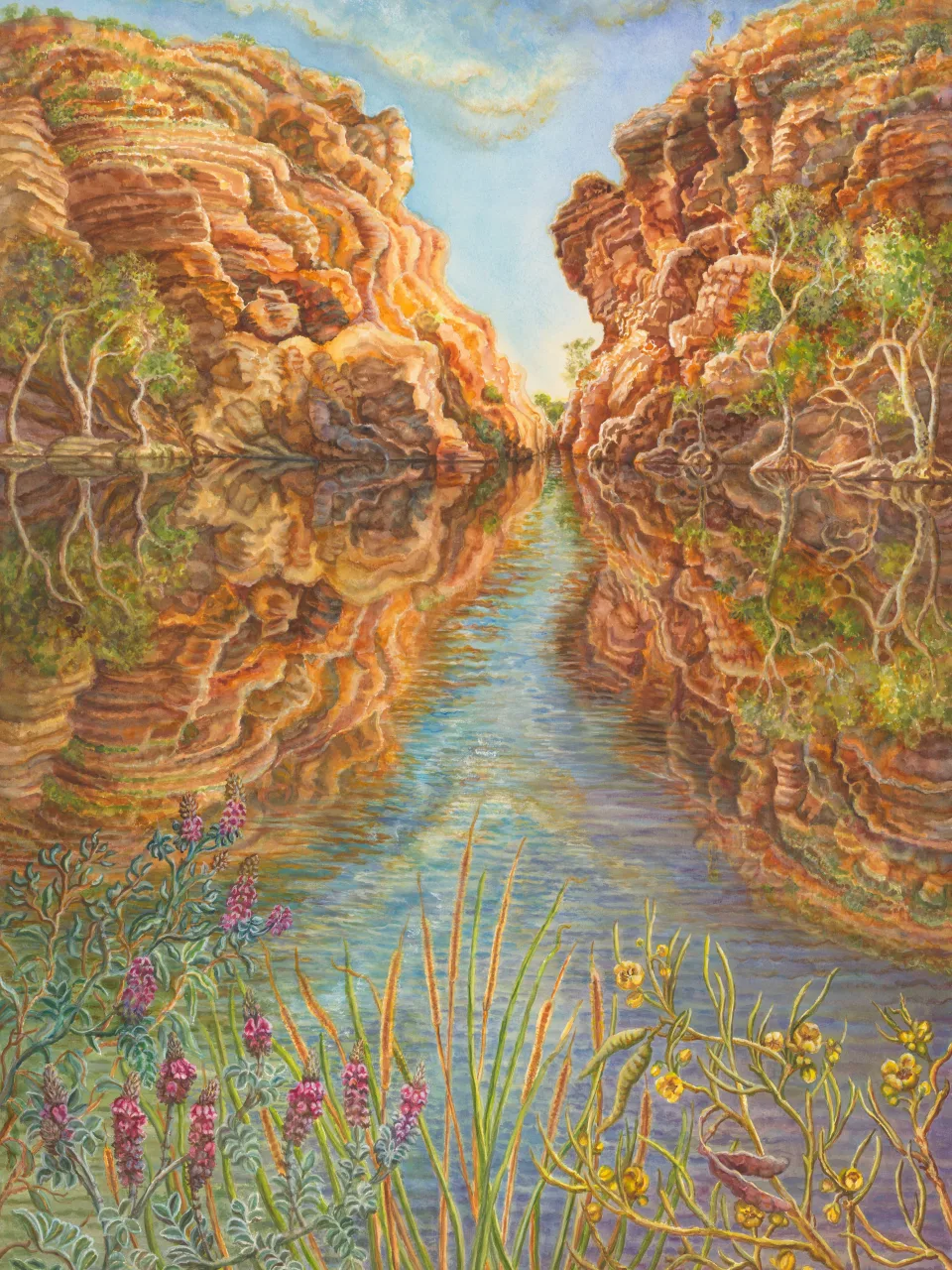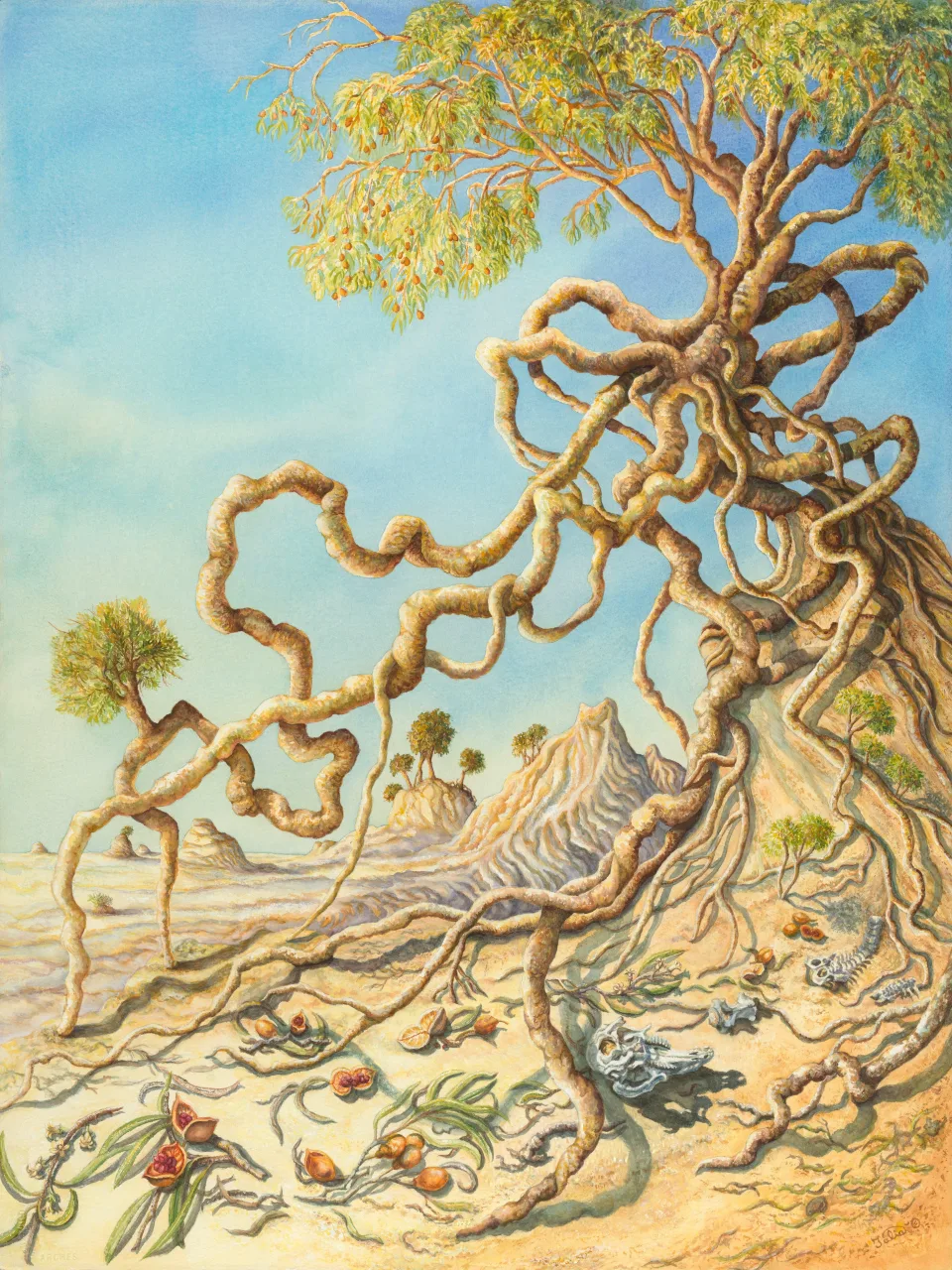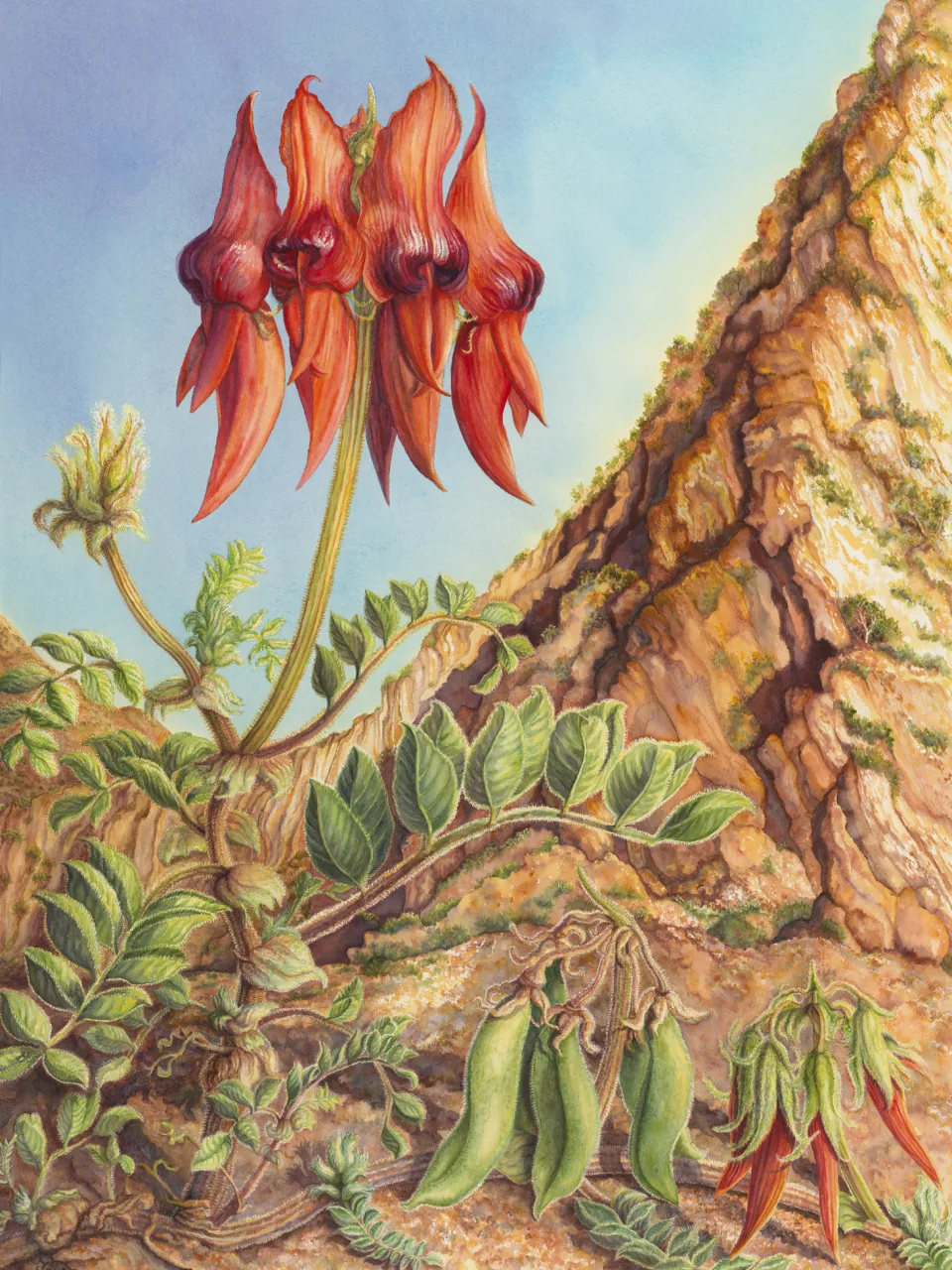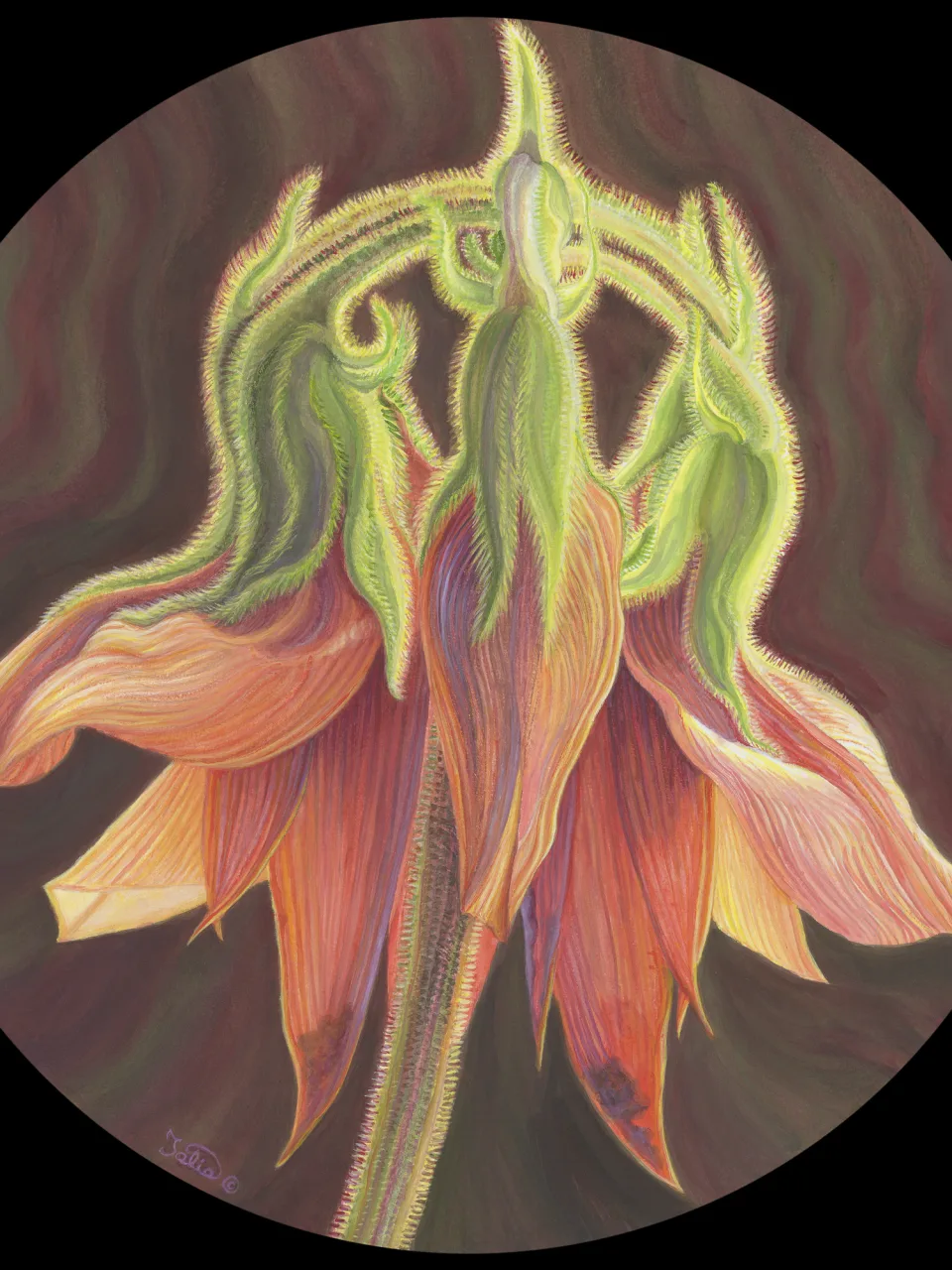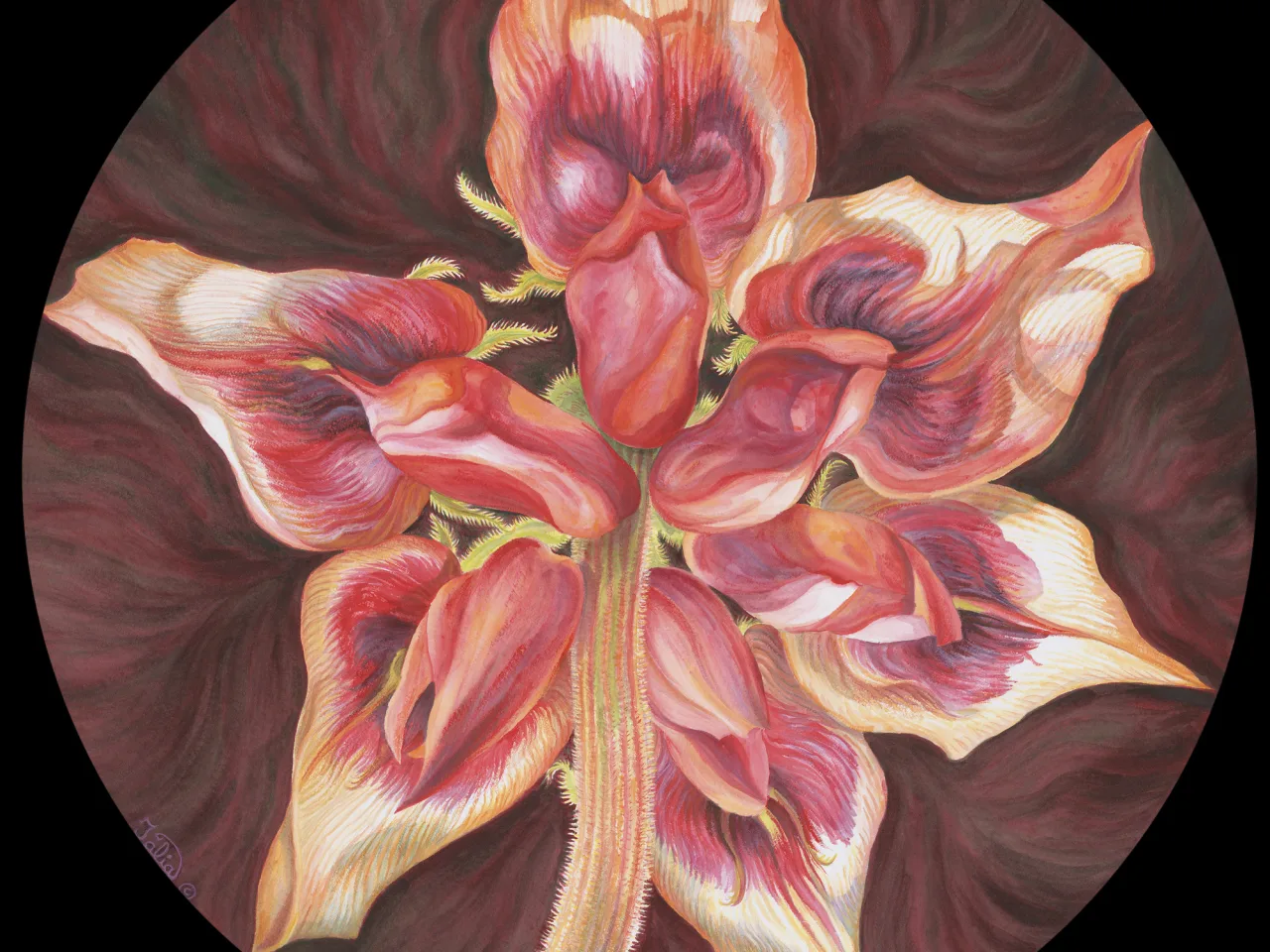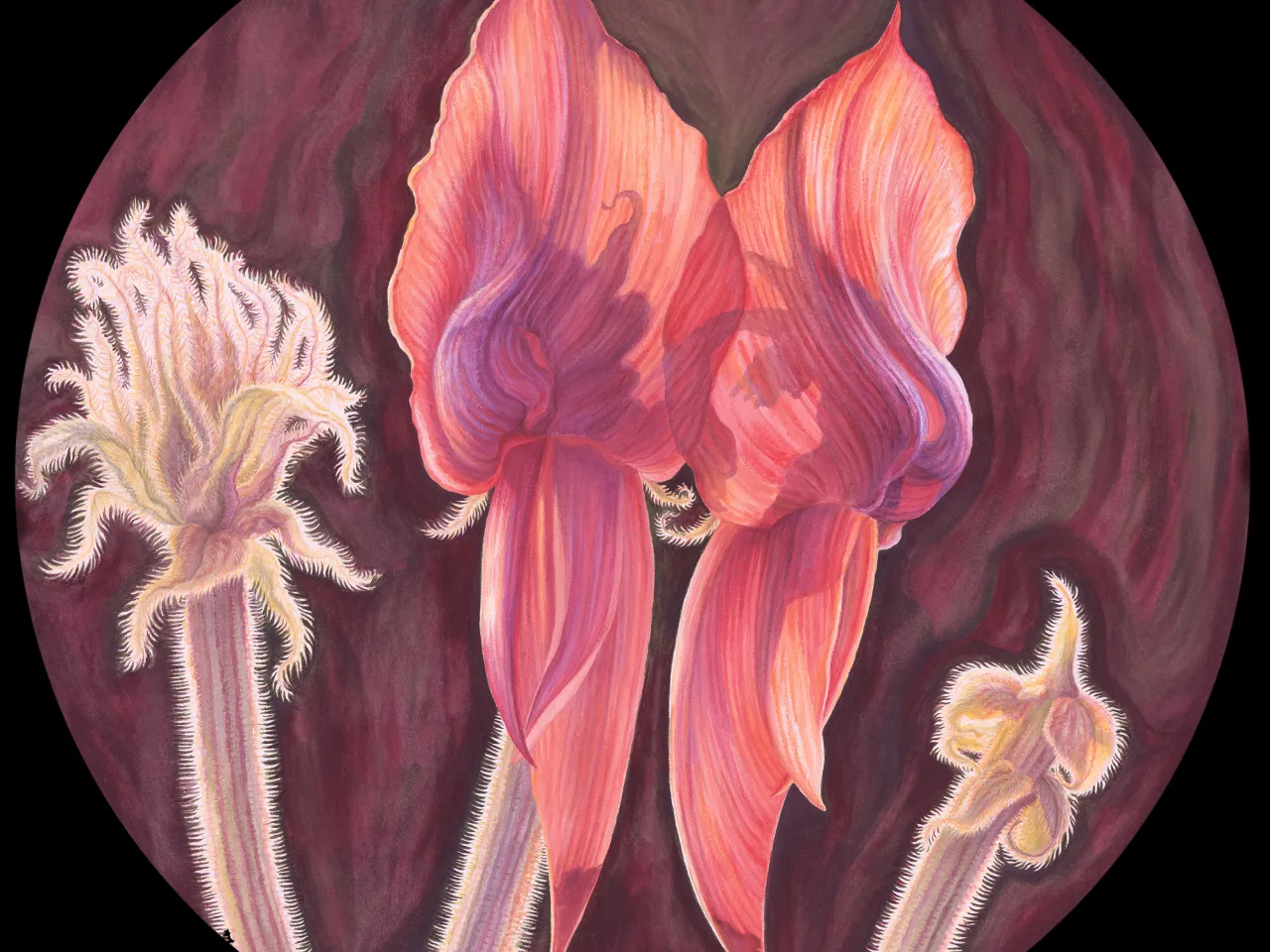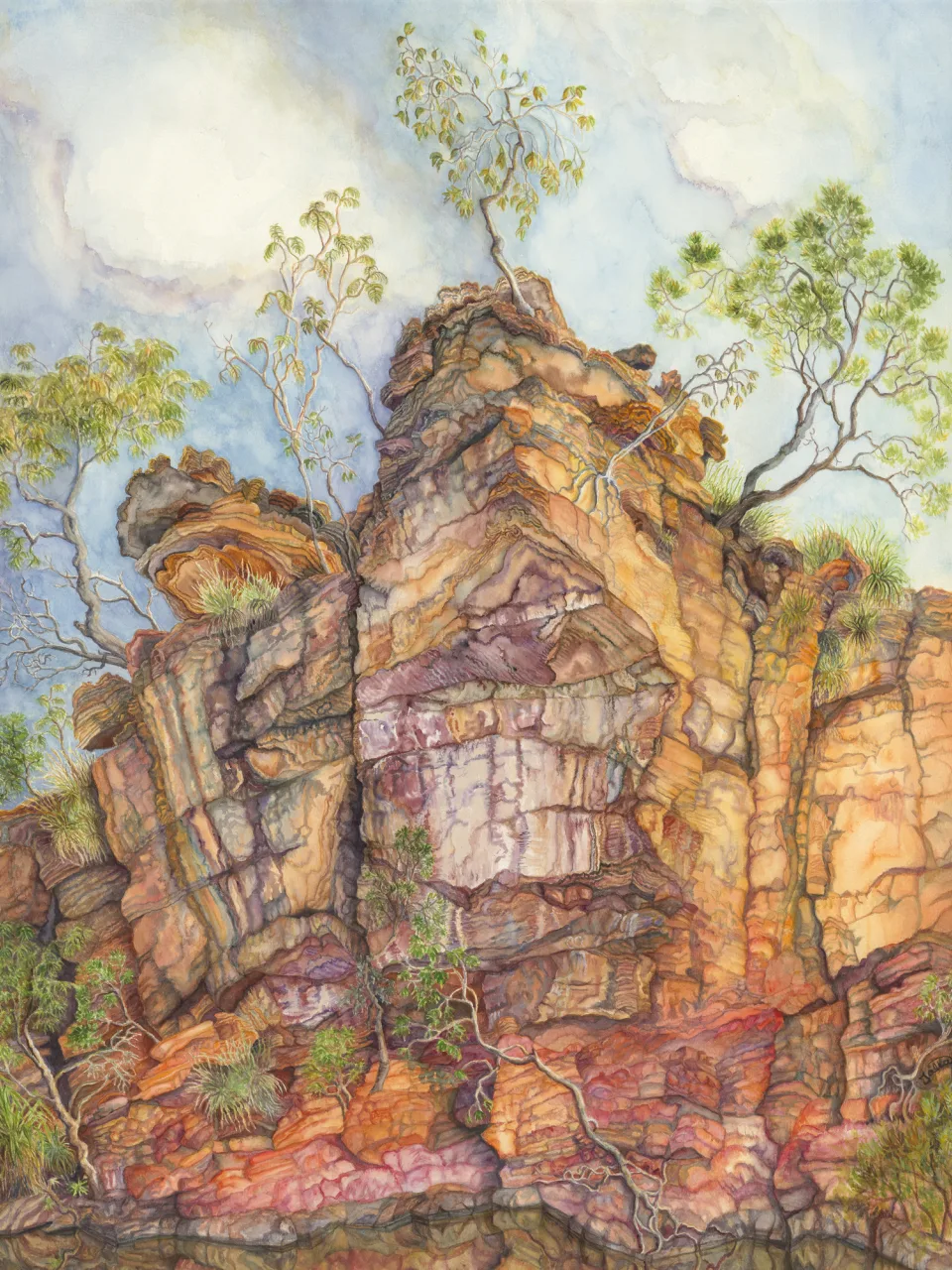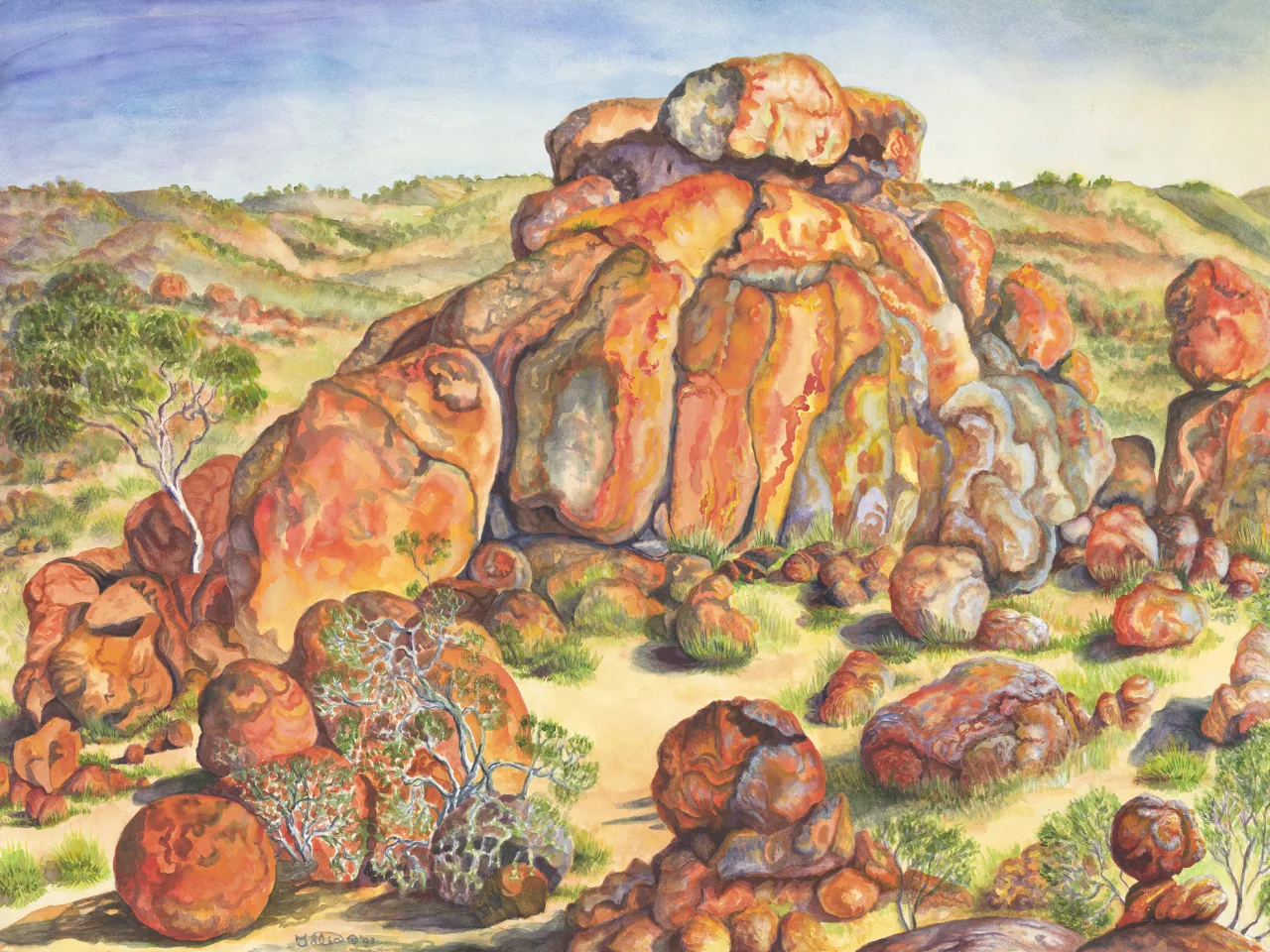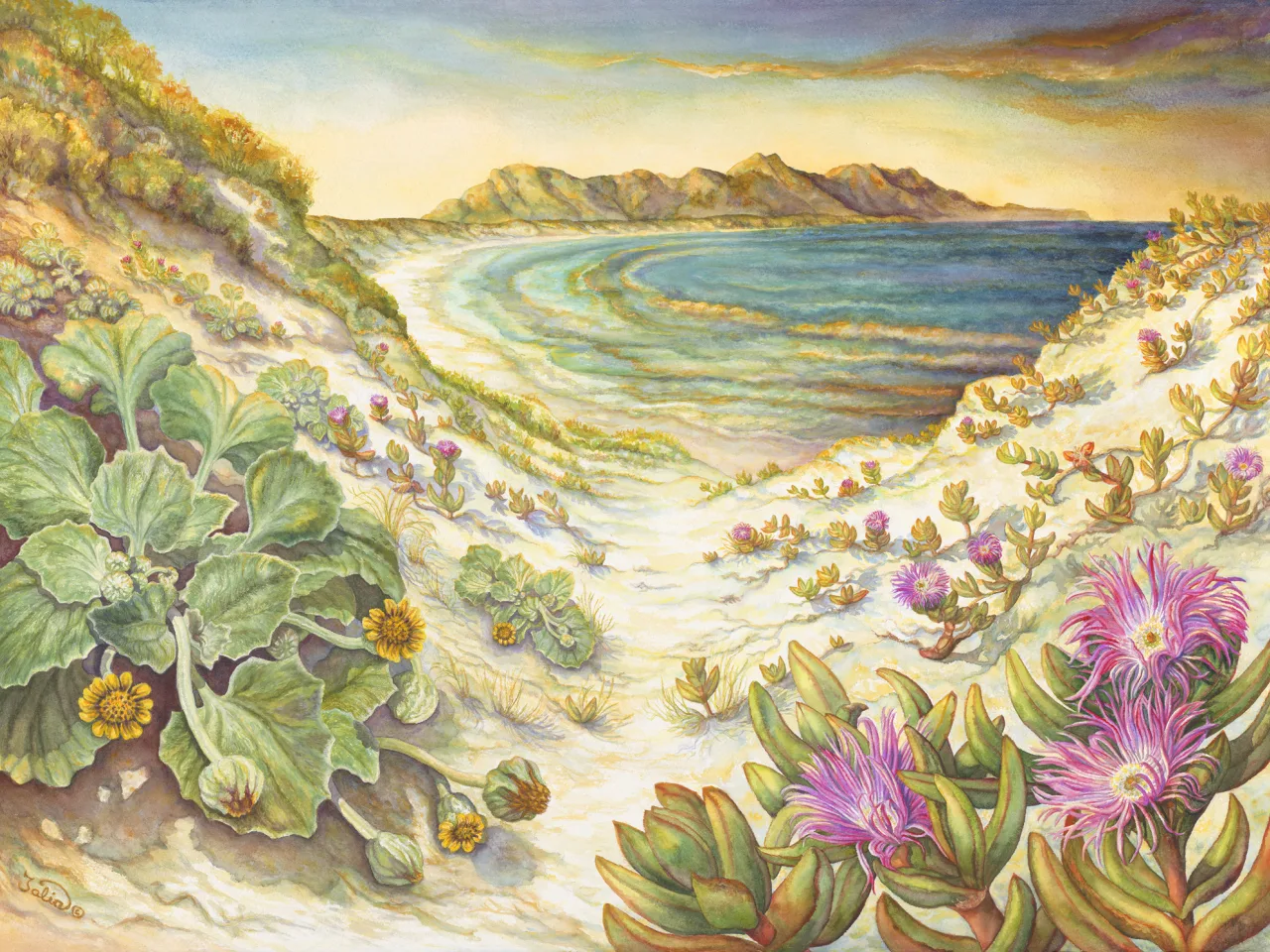Artwork 62A Parakeelyas at Niagara Dam, Western Australian Goldfields
Section 31
Plants of the Arid Zone—Desert Virtuosi
Trephina Gorge Nature Park, Northern Territory, Northern Territory
- 1. Calandrinia sp. (parakeelya)
Artwork 62A
Buy a print
Limited edition giclee archival quality print on 310 gsm Ilford cotton rag (from an original work in watermedia on watercolour board, 61 cm high x 45 cm wide)
from the artist
While living on the West Australian Goldfields, we travelled about 300 km north from Coolgardie to an art exhibition at Leonora, railhead and centre of the north-eastern Goldfields and surrounding pastoral region. Gold was found there in 1896, and many historic buildings grace the town. Nearby Gwalia is a mining ghost town that has been restored to demonstrate what life was like for the prospectors and miners. The townsfolk are proud of the headframe designed by the man who was the first mine manager of the Sons of Gwalia mine and later became the 31st President of the United States—Herbert Hoover.
Leaving Leonora, we decided to explore the surrounding countryside, so travelled about 20 km east to the tiny ghost town Kookynie—with restored shopfronts and Grand Hotel and a small coterie of hardy residents. We camped at nearby Niagara Dam, a lovely little oasis in the red earth desert on the edge of the Great Victoria Desert. Apparently, the dam was built in 1897 with cement carried by camel from Coolgardie!
While exploring around Niagara Dam, we discovered these lovely arid zone flowers, which we later identified as parakeelyas (a.k.a. calandrinias). The species may be undescribed as none in our books closely resemble this particular plant. While it has the typical rosette of succulent leaves, these leaves have no central groove as in several species. The leaves swell noticeably at the tips, and many have obvious pointed ends. They are light green near the centre, then gradually changing to dark green and purple-bronze near the tips. The flowers are a lovely rich pinkish magenta in colour, with 5 petals each about 1.5 cm long, and with beige to white stamens encircling a yellow stigma. They belong to the Portulacaceae family.
Although it would be marvellous to keep the lovely common name “parakeelya” as the genus name, botanical history may overrule that effort! There is a need to replace the genus name Calandrinia as the Australian genus is sufficiently different to belong to a separate genus. Parakeelya has been suggested, but an earlier type specimen was named Rumicastrum (Seddon, 2005/2006, pp. 35–40). So it looks as if the genus will be Rumicastrum after all! Until that is determined, Australian botanists are continuing to call the plant Calandrinia. And to some of us, they will continue to be “parakeelyas”.
